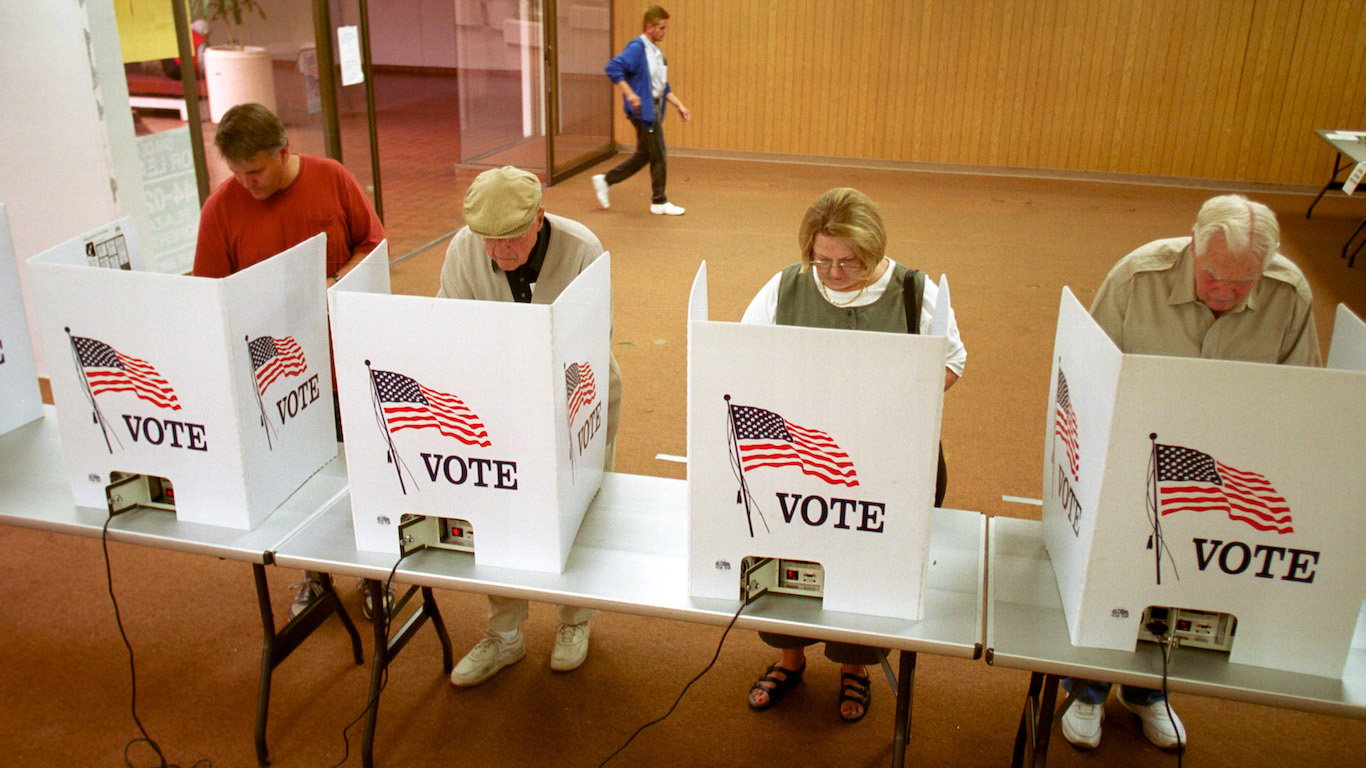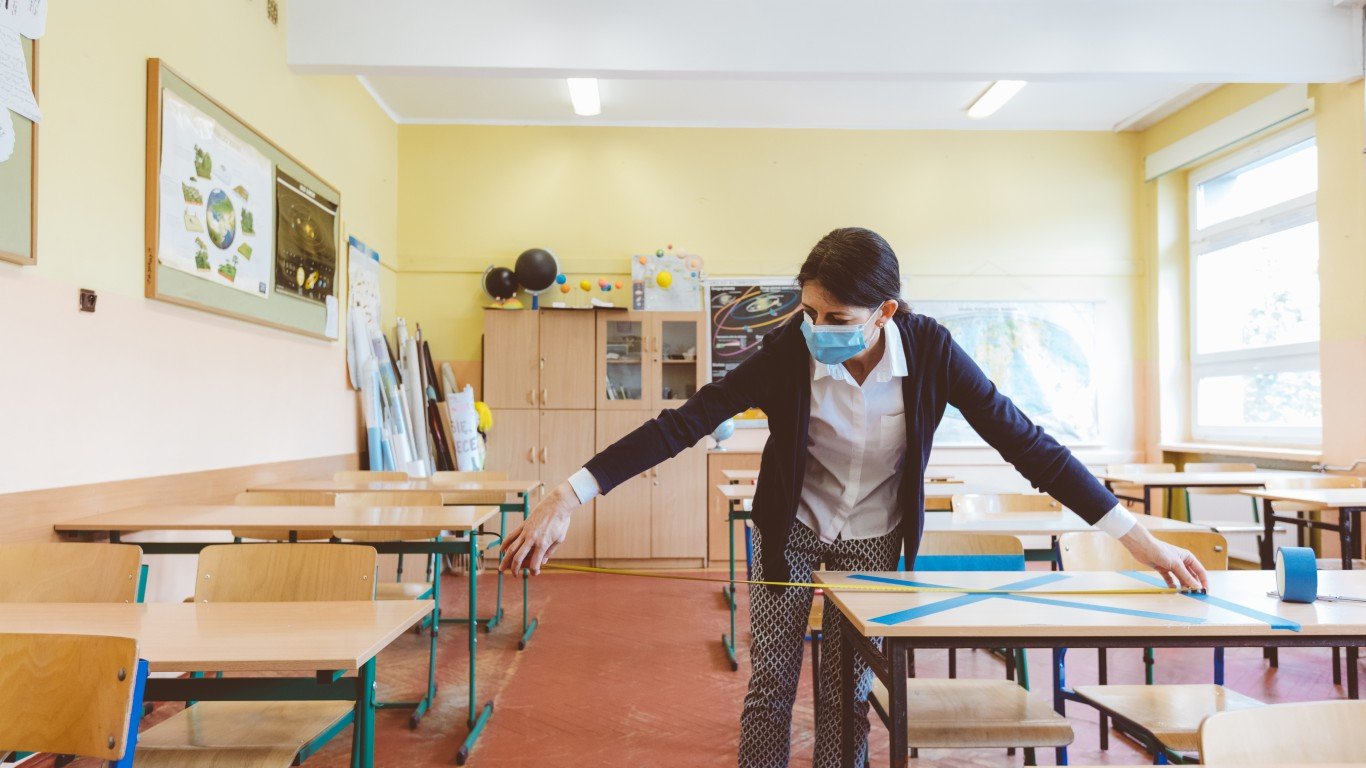

It’s mid-September, and as the temperature dips and the days get shorter, schools in almost all parts of the country have reopened. Because of the COVID-19 pandemic, the school day has a new look. Schools are implementing measures to facilitate social distancing and minimize the risk of virus spread including part-time remote learning, temperature checks at the door, mask wearing, and one-way hallways.
State health departments across the nation have released different guidelines for safely reopening schools. These frameworks are not mandates, and the final decisions on how to reopen their schools rest with each school district. School districts can also change plans at any time during the academic year. Such changes have been happening already as COVID-19 outbreaks forced many districts to shift to remote learning instead of in-person classes, at least temporarily.
24/7 Wall St. reviewed executive orders, directives, and guidelines issued by either governors or state education and health departments and news reports to create a list of restrictions and safety recommendations for resuming education remotely and in person in every state.
The guidelines are intended to lessen the transmission of the virus among students, a goal difficult to achieve in many states. In some cases, schools shut doors and canceled all after-school programs already after a single staff member had tested positive for the virus.
How to reopen has sometimes put state governments and local officials in conflict. In Iowa, Des Moines school district began the fall semester in early September by teaching remotely, defying Gov. Kim Reynolds’ order to teach primarily in person or risk losing state funding.
Many of the ideas and suggestions for opening schools depend on whether communities have been able to contain the spread of the coronavirus. Most states’ guidelines were published at the beginning or in the middle of June, before a resurgence in COVID-19 cases was reported in many parts of the country in June and July. These are the states where the virus is slowing (and where it’s still getting worse).
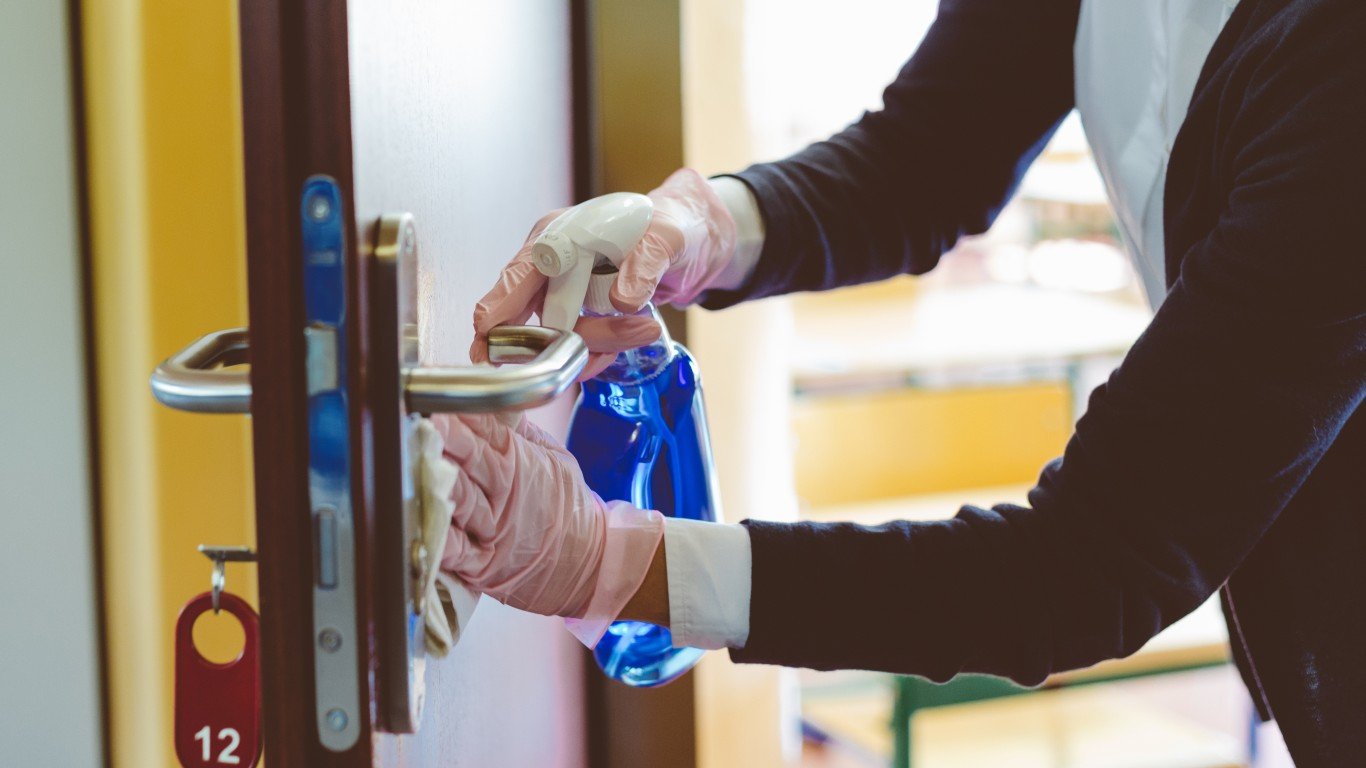
Alabama
> Start of 2020-2021 academic year: Mid-to-late August
> Reopening plan: Hybrid model, 2 days a week in-person instruction, alternating AM and PM schedule
> Re-closing schools: One high school in Limestone County closed from Aug. 17 to Aug. 21, after 4 students tested positive for COVID-19. Gadsden City Schools will allow in person instruction as an option beginning Sept. 28.
> Daily routine changes: Reinforce hand-washing, limit use of classroom materials. Travel between buildings should be stopped or minimized.
> Mask or face covering rules: Recommended for nurses and school visitors
> Health screening precautions: Daily temperature checks
> Cumulative COVID-19 cases as of Sep 15: 2,868 per 100,000 people — 5th highest (total: 140,160)
> Change in trailing 7-day avg. daily cases, Sep 7 – Sep 14: 4.9% — 24th largest increase (from 132,973 to 139,459)
> Population: 4.9 million
[in-text-ad]
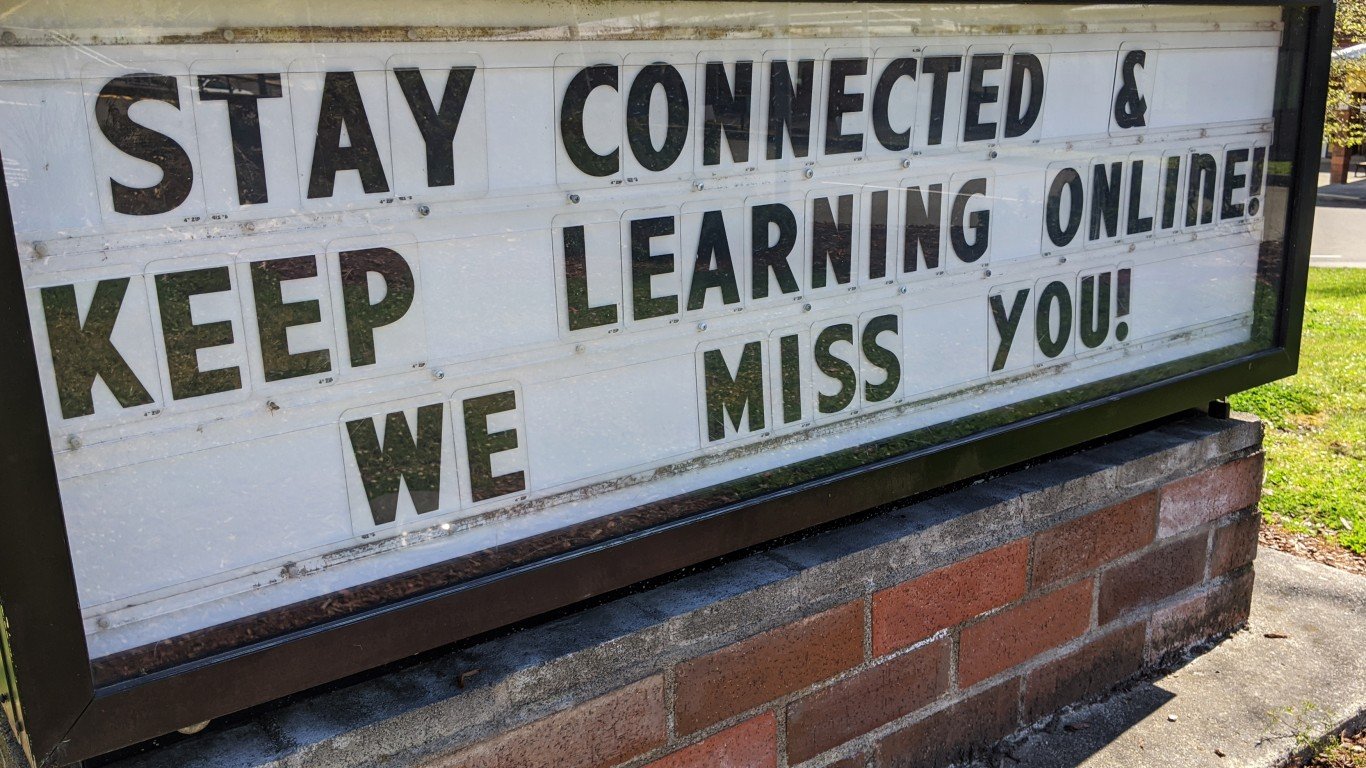
Alaska
> Start of 2020-2021 academic year: Mid-August
> Reopening plan: Based on community spread, elementary school in-person, middle and high school distance learning
> Re-closing schools: 3 schools in the Mat-Su Borough School District, the state’s largest, closed as of Sept. 1 after 5 COVID-19 cases were reported. The Anchorage School District has also temporarily closed schools because of the coronavirus. The goal is to reopen by mid-October.
> Daily routine changes: Extended dismissal times, scheduled arrival times
> Mask or face covering rules: Encouraged whenever possible
> Health screening precautions: Daily temperature and symptom screening for all
> Cumulative COVID-19 cases as of Sep 15: 992 per 100,000 people — 9th lowest (total: 7,313)
> Change in trailing 7-day avg. daily cases, Sep 7 – Sep 14: 8.7% — 9th largest increase (from 6,690 to 7,270)
> Population: 737,000

Arizona
> Start of 2020-2021 academic year: Mid-August
> Reopening plan: Up to each district
> Re-closing schools: One school in Tucson closed from Aug. 25 – Sept. 7 after one student tested positive. Another schools partially closed after a teacher tested positive
> Daily routine changes: Assigned seating, designated arrival times or locations, lunch in classrooms
> Mask or face covering rules: Required if social distancing is difficult
> Health screening precautions: Daily symptom screening and temperature checks
> Cumulative COVID-19 cases as of Sep 15: 2,917 per 100,000 people — 4th highest (total: 209,209)
> Change in trailing 7-day avg. daily cases, Sep 7 – Sep 14: 1.3% — 3rd smallest increase (from 205,964 to 208,725)
> Population: 7.2 million
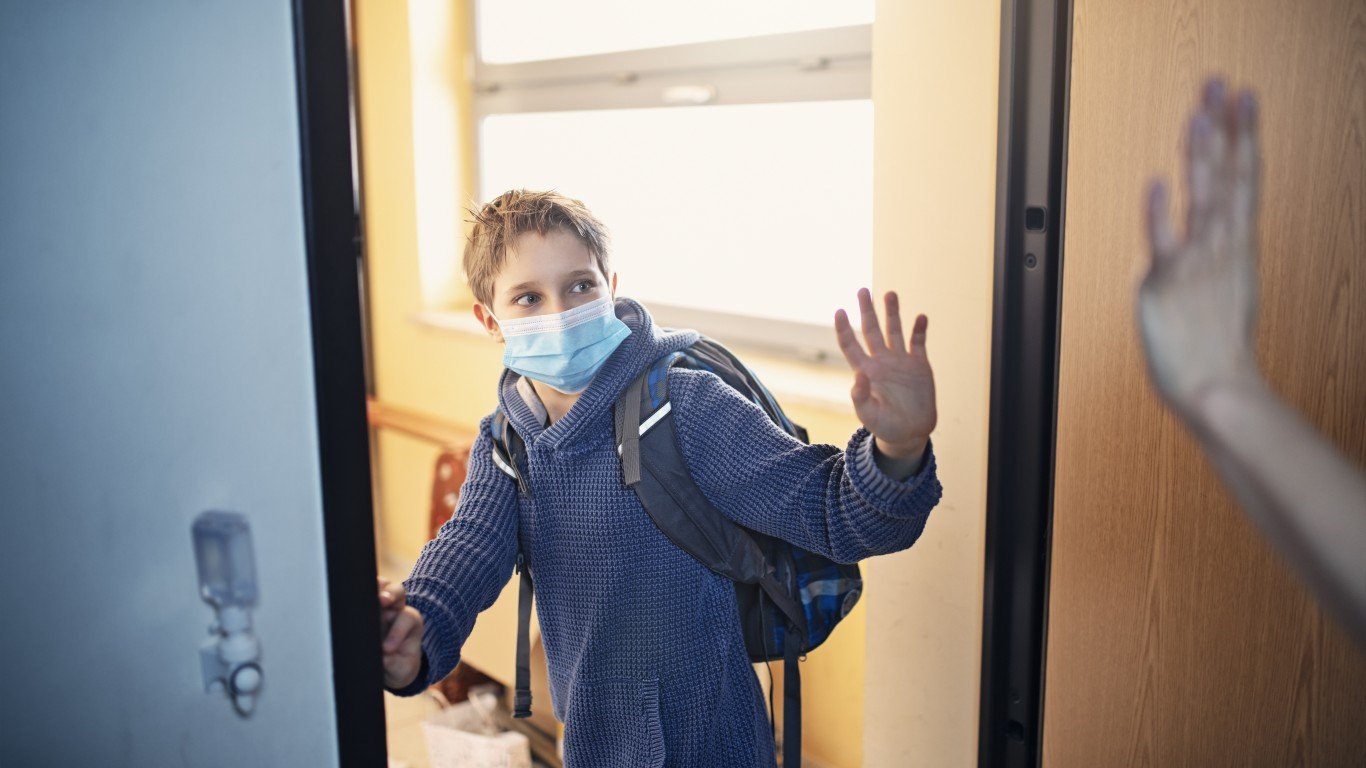
Arkansas
> Start of 2020-2021 academic year: Mid-to-late August
> Reopening plan: Must provide in-person instructions as option 5 days a week
> Re-closing schools: Several schools temporarily moved classes online after 100+ students and staff had to quarantine due to possible exposure to the virus. The Earle School District close one elementary school indefinitely after a second person tested positive
> Daily routine changes: Lunch in classrooms, no gatherings in hallways and cafeterias, rotating teachers, not students
> Mask or face covering rules: Required for children 10+ on buses, drivers, required for adults and students 10+ in school buildings
> Health screening precautions: Have screening stations, screening signs
> Cumulative COVID-19 cases as of Sep 15: 2,368 per 100,000 people — 11th highest (total: 71,357)
> Change in trailing 7-day avg. daily cases, Sep 7 – Sep 14: 8.0% — 11th largest increase (from 65,377 to 70,627)
> Population: 3.0 million
[in-text-ad-2]
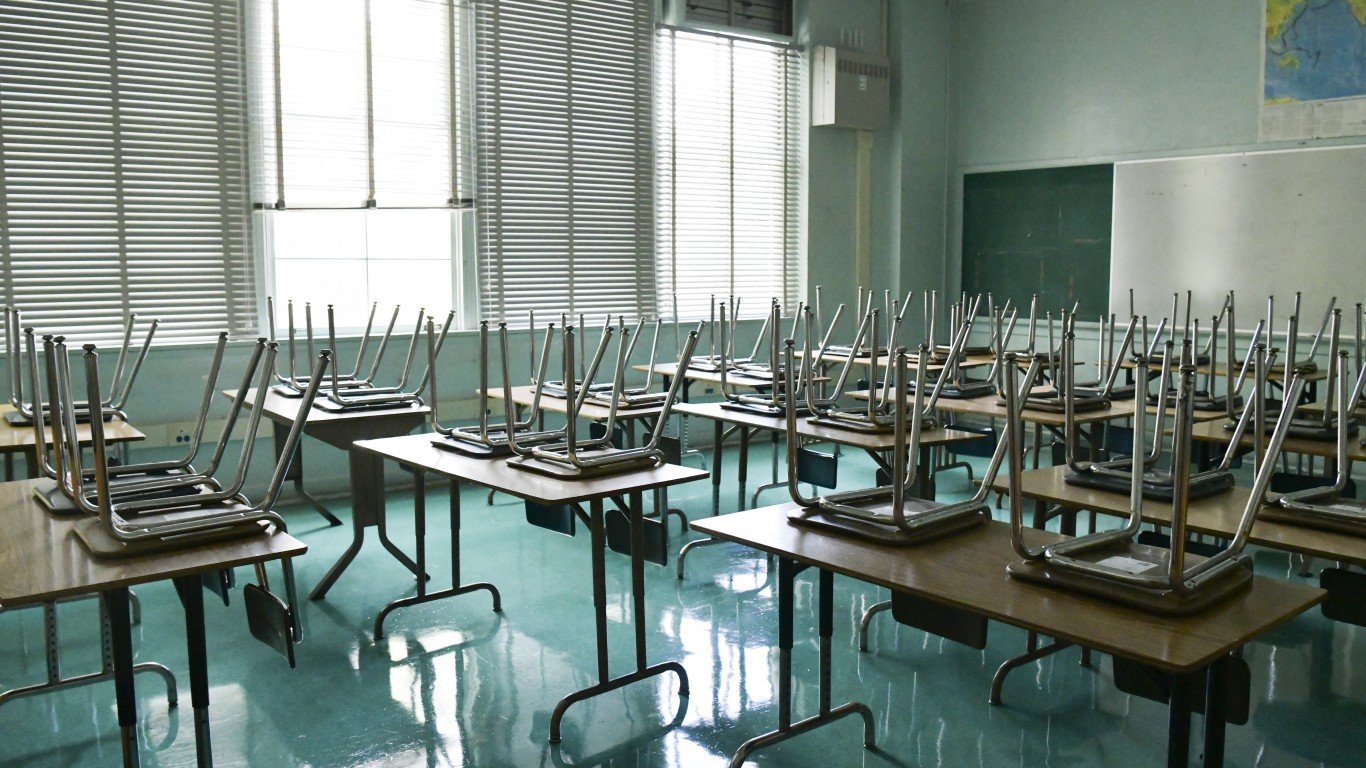
California
> Start of 2020-2021 academic year: Early September
> Reopening plan: Based on community spread, alternate distance learning with in-person instruction
> Re-closing schools: N/A
> Daily routine changes: Stagger cafeteria use, lunch in classrooms or outdoors, limit gatherings
> Mask or face covering rules: Required for adults and Grade 3 and up
> Health screening precautions: Daily symptom screening and temperature checks, hand-washing required before entering school
> Cumulative COVID-19 cases as of Sep 15: 1,921 per 100,000 people — 23rd highest (total: 760,013)
> Change in trailing 7-day avg. daily cases, Sep 7 – Sep 14: 3.1% — 10th smallest increase (from 735,235 to 757,778)
> Population: 39.6 million
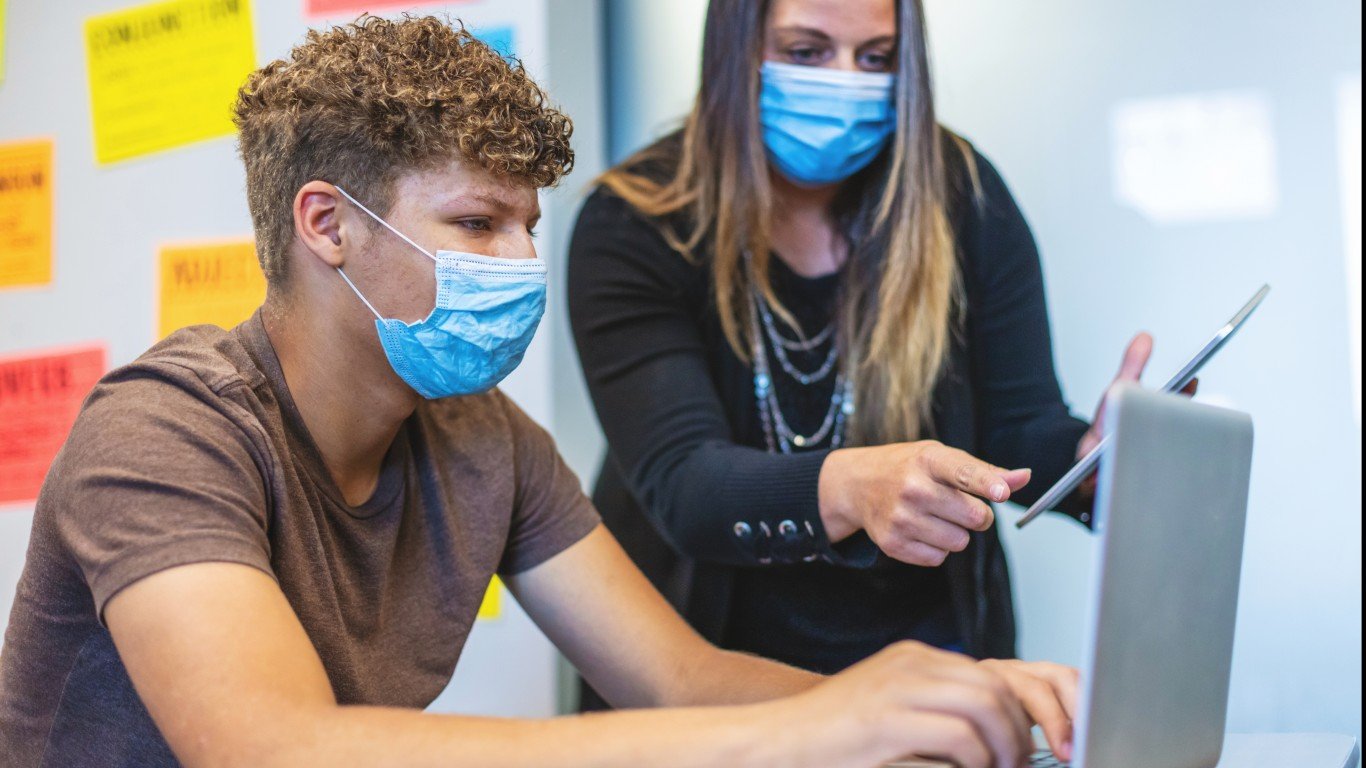
Colorado
> Start of 2020-2021 academic year: Early August
> Reopening plan: Up to each district, maximize in-person learning
> Re-closing schools: In mid-September, 1 school closed temporarily and one shifted to remote learning after students and staffers tested positive for COVID-19.
> Daily routine changes: Frequent hand-washing, staggered arrival and dismissal times, assigned seating, limit capacity on buses
> Mask or face covering rules: Recommended for students 11+, required for staff and if social distancing is difficult
> Health screening precautions: At-home or on-site symptom screening, temperature checks
> Cumulative COVID-19 cases as of Sep 15: 1,090 per 100,000 people — 11th lowest (total: 62,099)
> Change in trailing 7-day avg. daily cases, Sep 7 – Sep 14: 4.1% — 21st smallest increase (from 59,274 to 61,699)
> Population: 5.7 million
[in-text-ad]
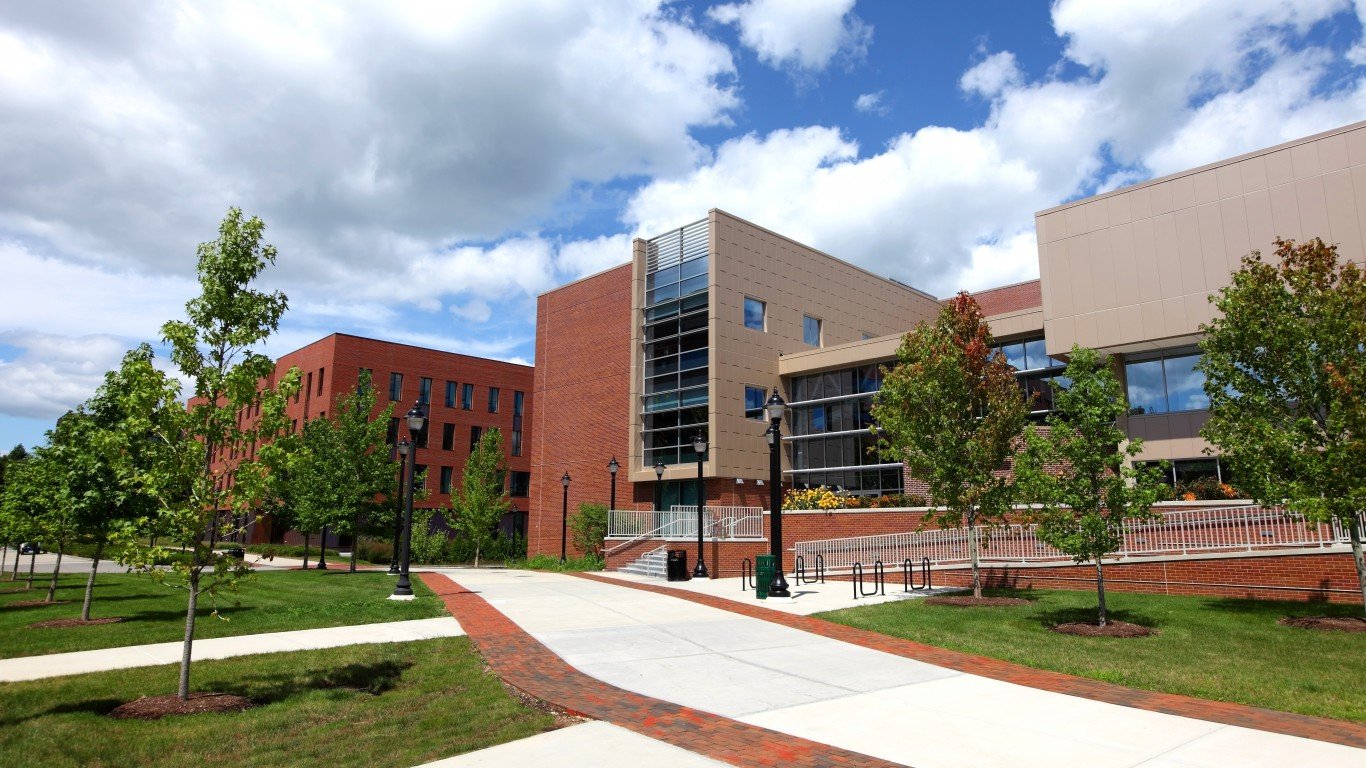
Connecticut
> Start of 2020-2021 academic year: Late August
> Reopening plan: Up to each district, most open for in-person instruction
> Re-closing schools: Since the start of the new academic year, more than a dozen public schools across Connecticut have temporarily shut down in-person learning due to COVID-19 cases among students and staff
> Daily routine changes: Less free movement through school facilities, assigned seating, frequent hand-washing
> Mask or face covering rules: Masks required for all when inside school
> Health screening precautions: Maximize social distancing, students bring their own water
> Cumulative COVID-19 cases as of Sep 15: 1,540 per 100,000 people — 18th lowest (total: 55,031)
> Change in trailing 7-day avg. daily cases, Sep 7 – Sep 14: 2.9% — 9th smallest increase (from 53,365 to 54,895)
> Population: 3.6 million
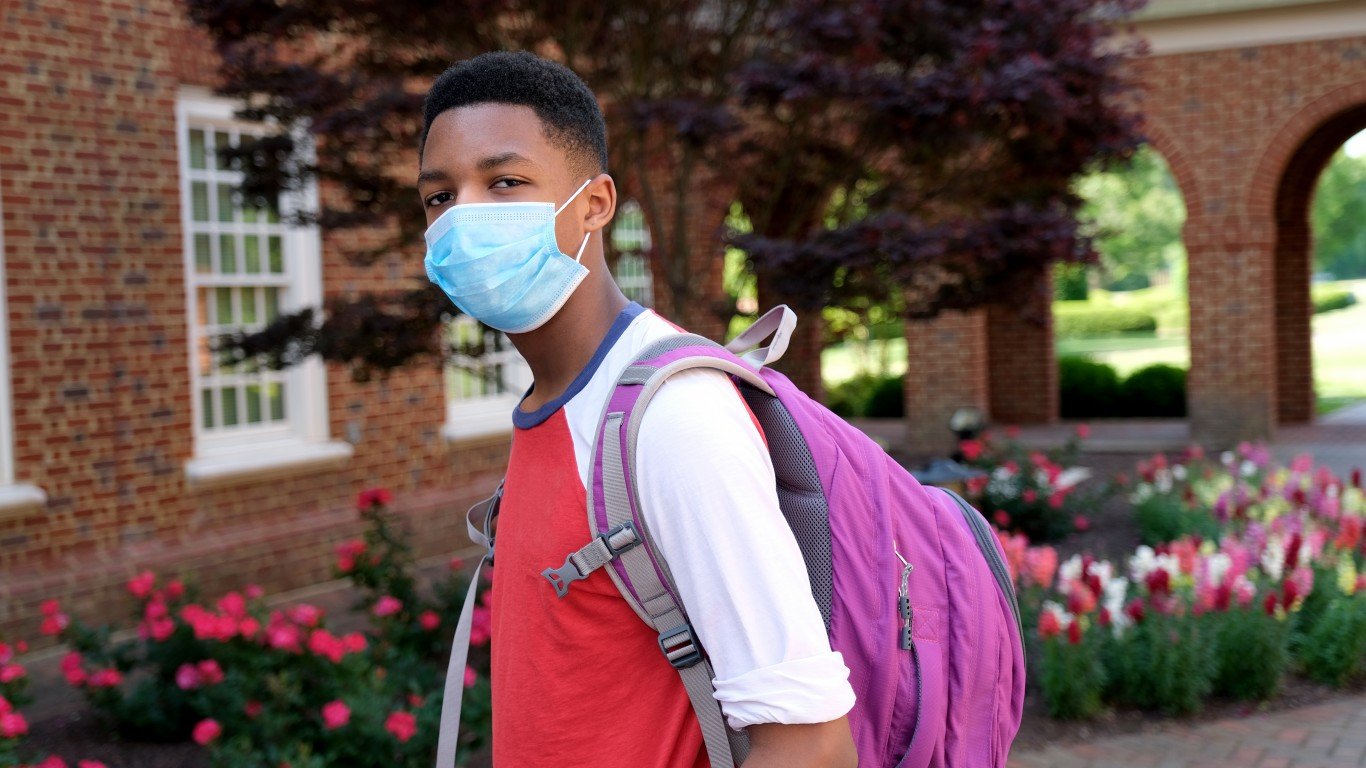
Delaware
> Start of 2020-2021 academic year: Early-to-mid August
> Reopening plan: Up to each district
> Re-closing schools: N/A
> Daily routine changes: Direct flow of people in common areas, do activities that allow for social distancing, minimize mixing of classes, stay with same group for no more than 15 minutes
> Mask or face covering rules: Required for staff and grades 4-12, recommended for Pre-K – 3 grade
> Health screening precautions: Daily symptom screening and temperature checks at home, the state will provide testing for staff and students
> Cumulative COVID-19 cases as of Sep 15: 1,979 per 100,000 people — 20th highest (total: 19,137)
> Change in trailing 7-day avg. daily cases, Sep 7 – Sep 14: 3.8% — 18th smallest increase (from 18,249 to 18,937)
> Population: 967,000
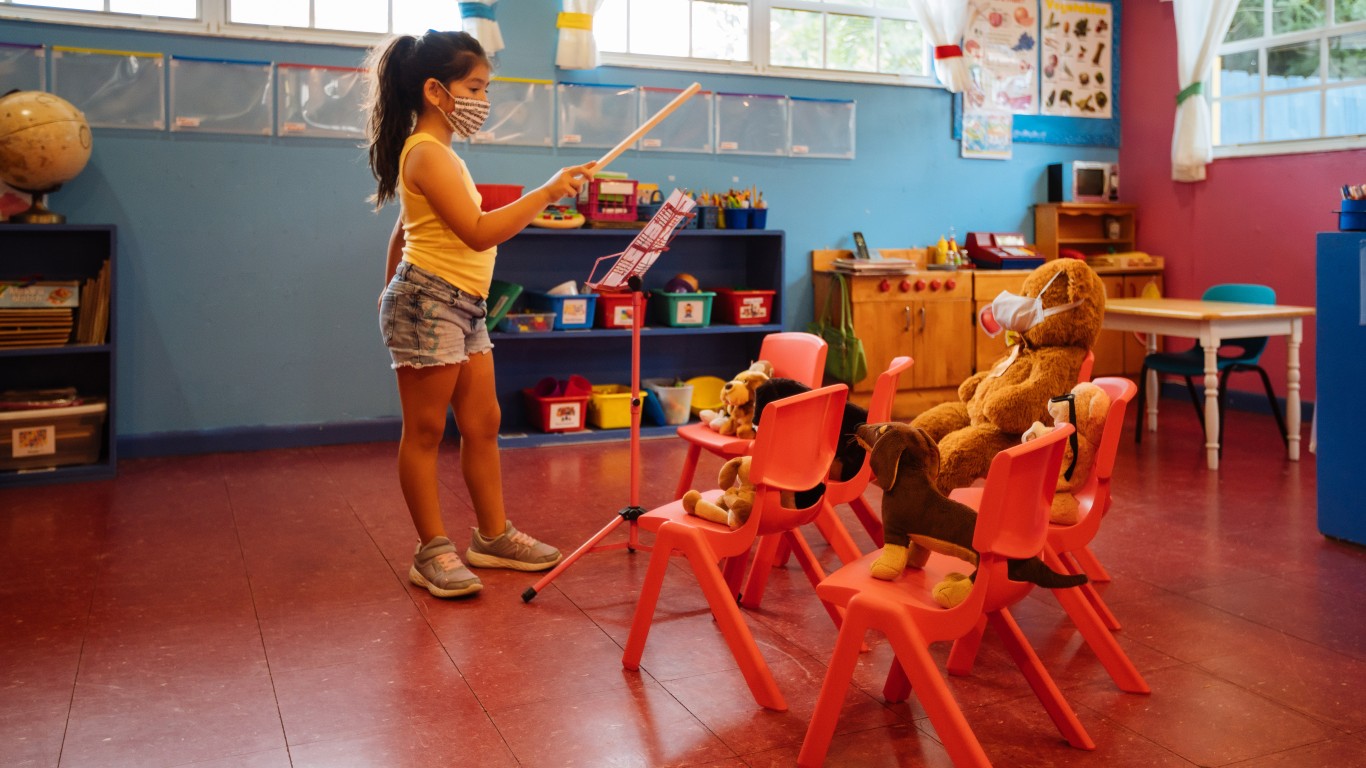
Florida
> Start of 2020-2021 academic year: Mid-August
> Reopening plan: In-person instruction, unless barred by local directives
> Re-closing schools: At least one high school closed for 2 weeks on Sept. 8 after 6 people tested positive. Classes were moved online. 3 schools in Central Florida, were forced to shut down because of COVID-19 cases, one closd due to lack of substitute teachers
> Daily routine changes: Lunch in classrooms or outdoors, no sharing of supplies
> Mask or face covering rules: Up to each school
> Health screening precautions: Set up secondary clinic for kids showing symptoms
> Cumulative COVID-19 cases as of Sep 15: 3,140 per 100,000 people — 2nd highest (total: 668,846)
> Change in trailing 7-day avg. daily cases, Sep 7 – Sep 14: 2.7% — 7th smallest increase (from 648,269 to 665,730)
> Population: 21.3 million
[in-text-ad-2]
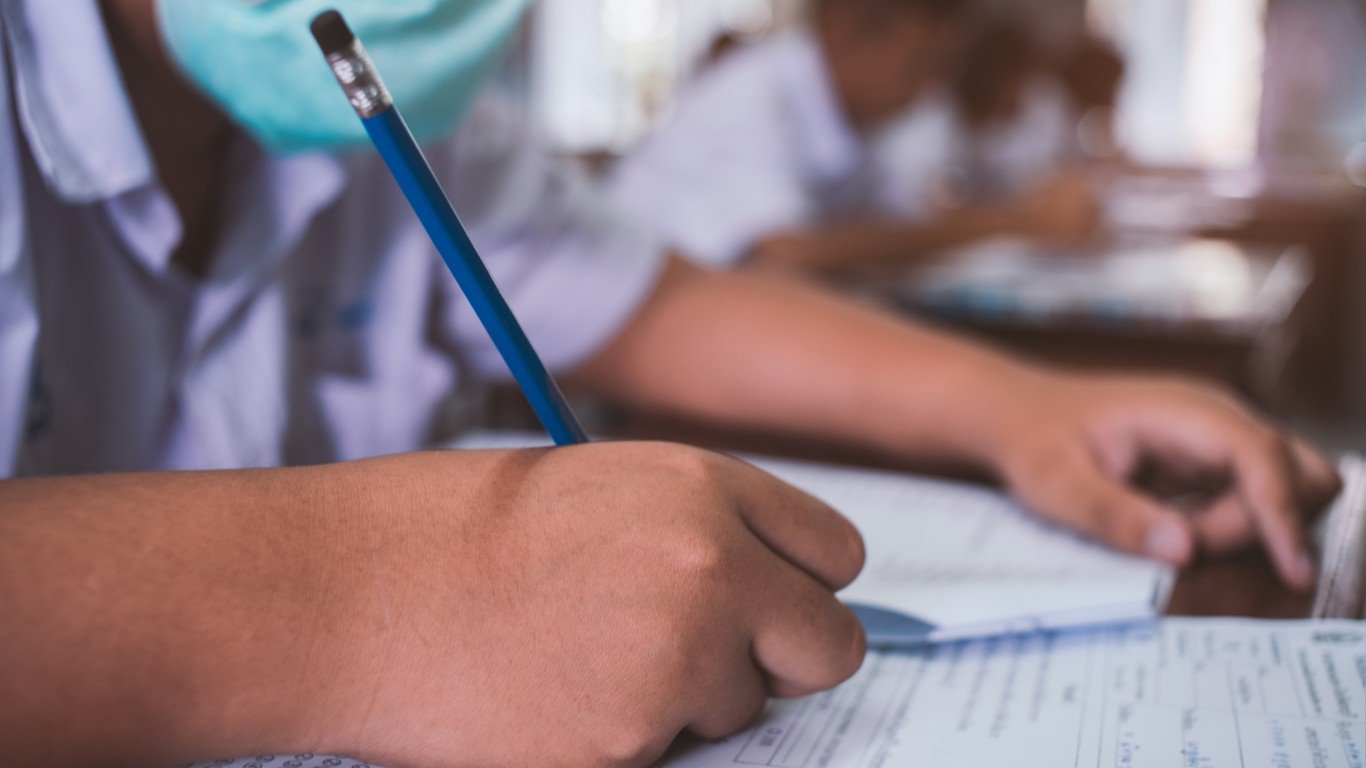
Georgia
> Start of 2020-2021 academic year: Early August
> Reopening plan: Up to each district
> Re-closing schools: Georgia schools closed to in-person learning in August after students and staff members tested positive for COVID-19
> Daily routine changes: Walking zones for in-person drop-off, schedule arrival times, schedule many outdoor activities, frequent hand-washing
> Mask or face covering rules: Personal choice
> Health screening precautions: Daily temperature checks for all
> Cumulative COVID-19 cases as of Sep 15: 2,822 per 100,000 people — 6th highest (total: 296,833)
> Change in trailing 7-day avg. daily cases, Sep 7 – Sep 14: 4.1% — 20th smallest increase (from 283,807 to 295,337)
> Population: 10.5 million
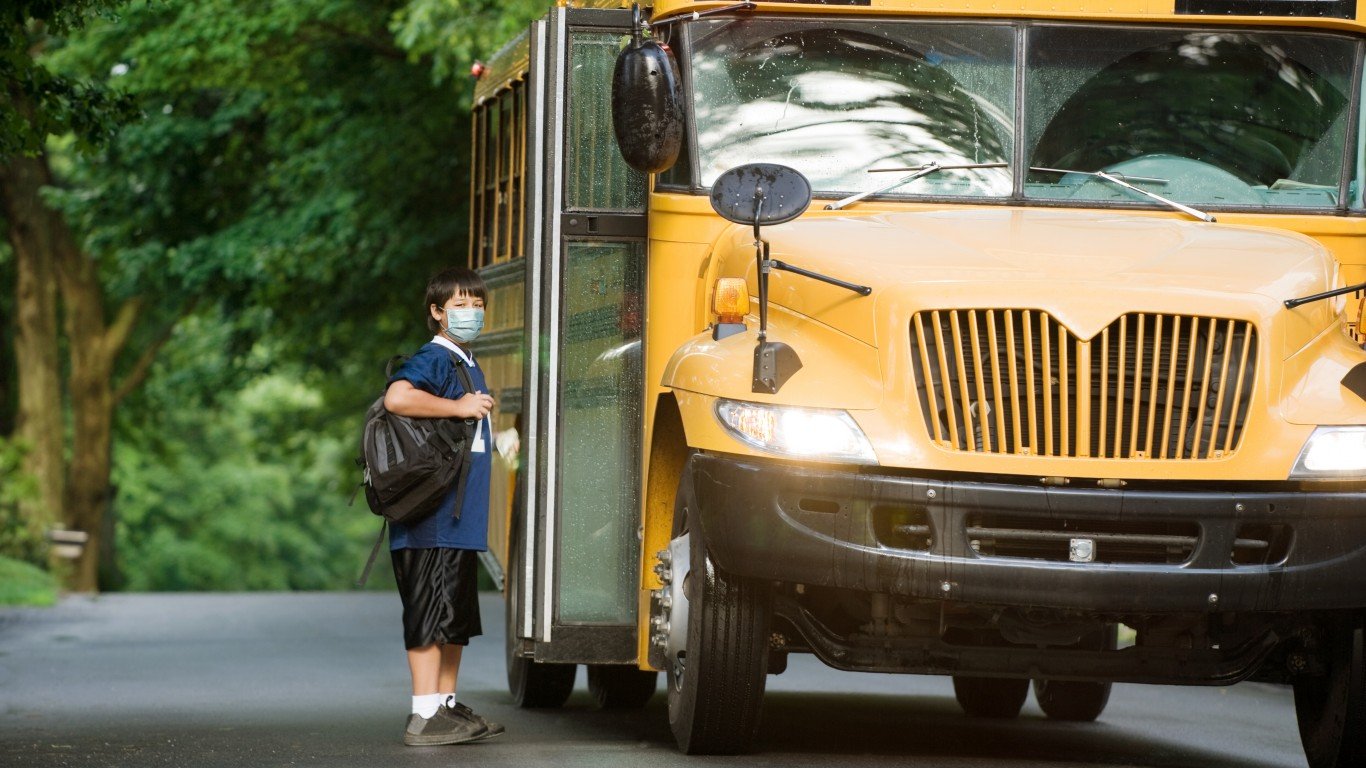
Hawaii
> Start of 2020-2021 academic year: Mid-August
> Reopening plan: Distance learning for at least first few weeks
> Re-closing schools: N/A
> Daily routine changes: Same groups every day, organize more virtual activities, lunch in classroom, stagger arrival and dismissal protocols
> Mask or face covering rules: Required if social distancing is difficult
> Health screening precautions: Daily symptom screenings
> Cumulative COVID-19 cases as of Sep 15: 763 per 100,000 people — 6th lowest (total: 10,844)
> Change in trailing 7-day avg. daily cases, Sep 7 – Sep 14: 8.6% — 10th largest increase (from 9,855 to 10,700)
> Population: 1.4 million
[in-text-ad]

Idaho
> Start of 2020-2021 academic year: Early September
> Reopening plan: Two of Idaho’s three largest districts decided to begin the year online
> Re-closing schools: The Cambridge School District closed 1 school for Aug. 31 and Sept. 1 after a staff member tested positive
> Daily routine changes: Limit physical interaction through group work, designate arrival points
> Mask or face covering rules: Required by some districts
> Health screening precautions: Daily symptom screening and temperature checks for all
> Cumulative COVID-19 cases as of Sep 15: 2,041 per 100,000 people — 18th highest (total: 35,810)
> Change in trailing 7-day avg. daily cases, Sep 7 – Sep 14: 5.3% — 22nd largest increase (from 33,741 to 35,532)
> Population: 1.8 million
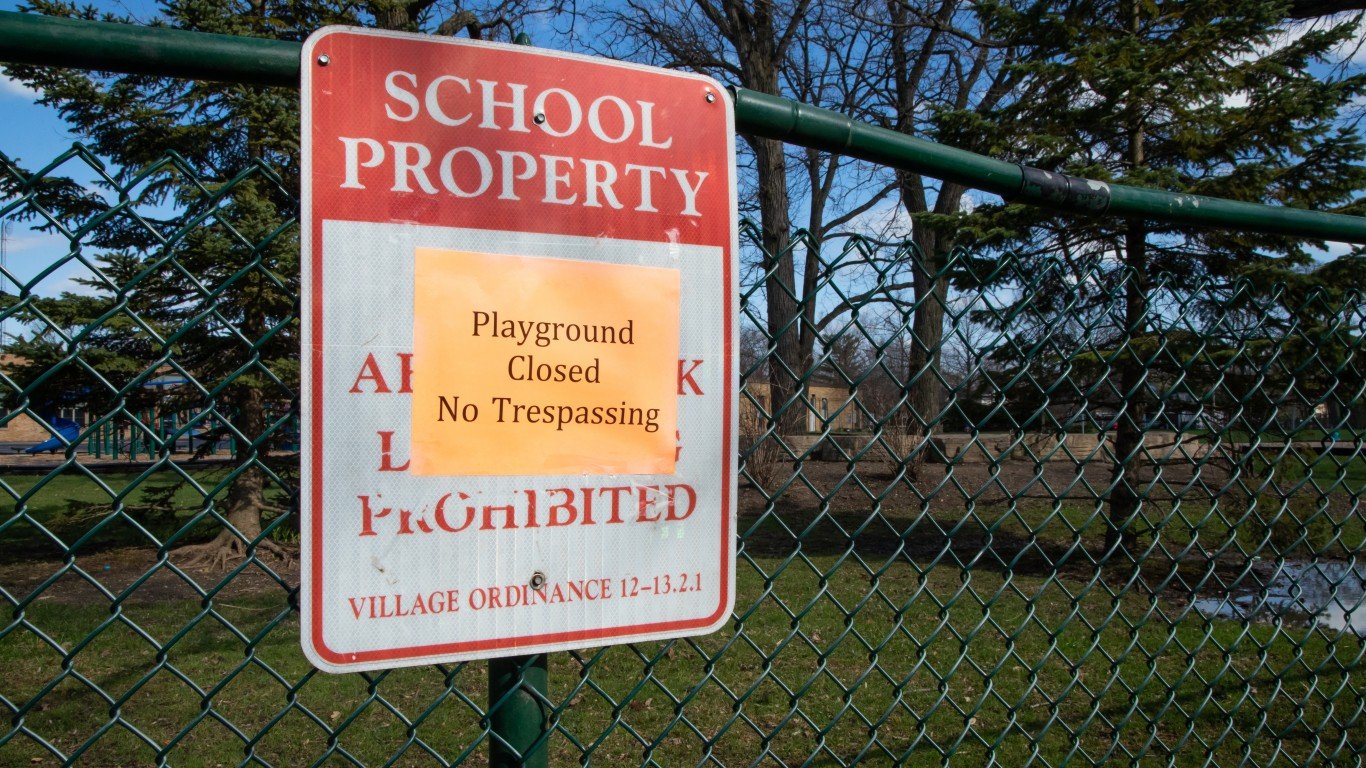
Illinois
> Start of 2020-2021 academic year: Early September
> Reopening plan: Up to each district, with majority going remote
> Re-closing schools: At least one elementary school in Palos Heights temporarily closed for 2 weeks until Sept. 8 after one staff member tested positive
> Daily routine changes: Schedule restroom breaks, stagger arrivals and dismissals, restrict sharing of any items, stagger indoor and outdoor play
> Mask or face covering rules: Required for all students age 5+
> Health screening precautions: Daily symptom screenings and temperature checks for all
> Cumulative COVID-19 cases as of Sep 15: 2,074 per 100,000 people — 17th highest (total: 264,210)
> Change in trailing 7-day avg. daily cases, Sep 7 – Sep 14: 4.7% — 25th largest increase (from 250,961 to 262,744)
> Population: 12.7 million
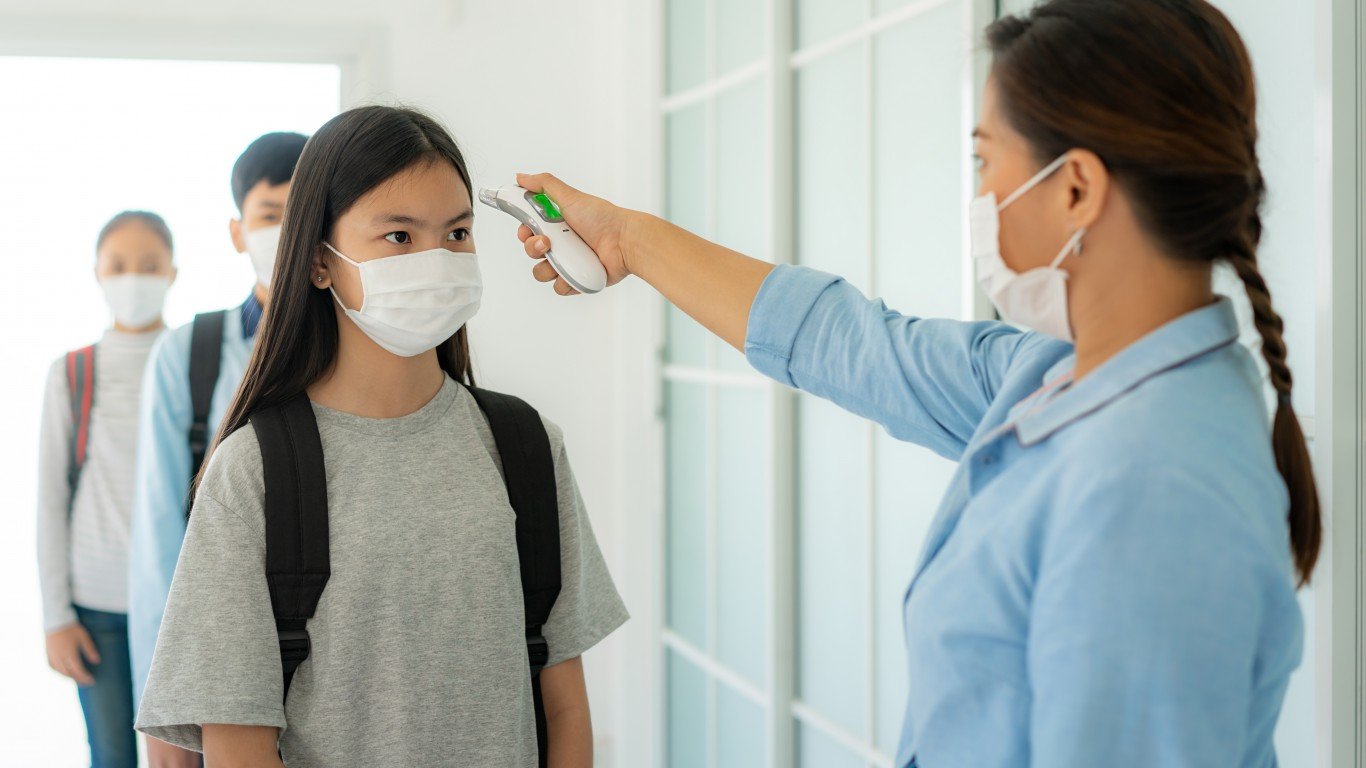
Indiana
> Start of 2020-2021 academic year: Mid-August
> Reopening plan: Most schools offer option of full-time in-person or distance learning
> Re-closing schools: Schools in Indiana closed to in-person learning in August after students and staff members tested positive for COVID-19
> Daily routine changes: Stay in single classroom, no mixing of classes or grade levels, discourage attendance awards, assign students to entrances
> Mask or face covering rules: Recommended for school staff
> Health screening precautions: Daily temperature checks
> Cumulative COVID-19 cases as of Sep 15: 1,602 per 100,000 people — 21st lowest (total: 107,229)
> Change in trailing 7-day avg. daily cases, Sep 7 – Sep 14: 6.1% — 17th largest increase (from 100,394 to 106,540)
> Population: 6.7 million
[in-text-ad-2]

Iowa
> Start of 2020-2021 academic year: Late August
> Reopening plan: Option for hybrid model or distance learning, at least 50% must be in-person instruction
> Re-closing schools: 3 days after opening for in-person instruction, one high school moved classes online for 2 days after a student tested positive. The Des Moines school district defied Gov. Kim Reynolds order and started the fall semester in early September by teaching remotely.
> Daily routine changes: Up to each school
> Mask or face covering rules: Not recommended but allowed
> Health screening precautions: Up to each school
> Cumulative COVID-19 cases as of Sep 15: 2,385 per 100,000 people — 10th highest (total: 75,275)
> Change in trailing 7-day avg. daily cases, Sep 7 – Sep 14: 6.3% — 15th largest increase (from 70,314 to 74,767)
> Population: 3.2 million
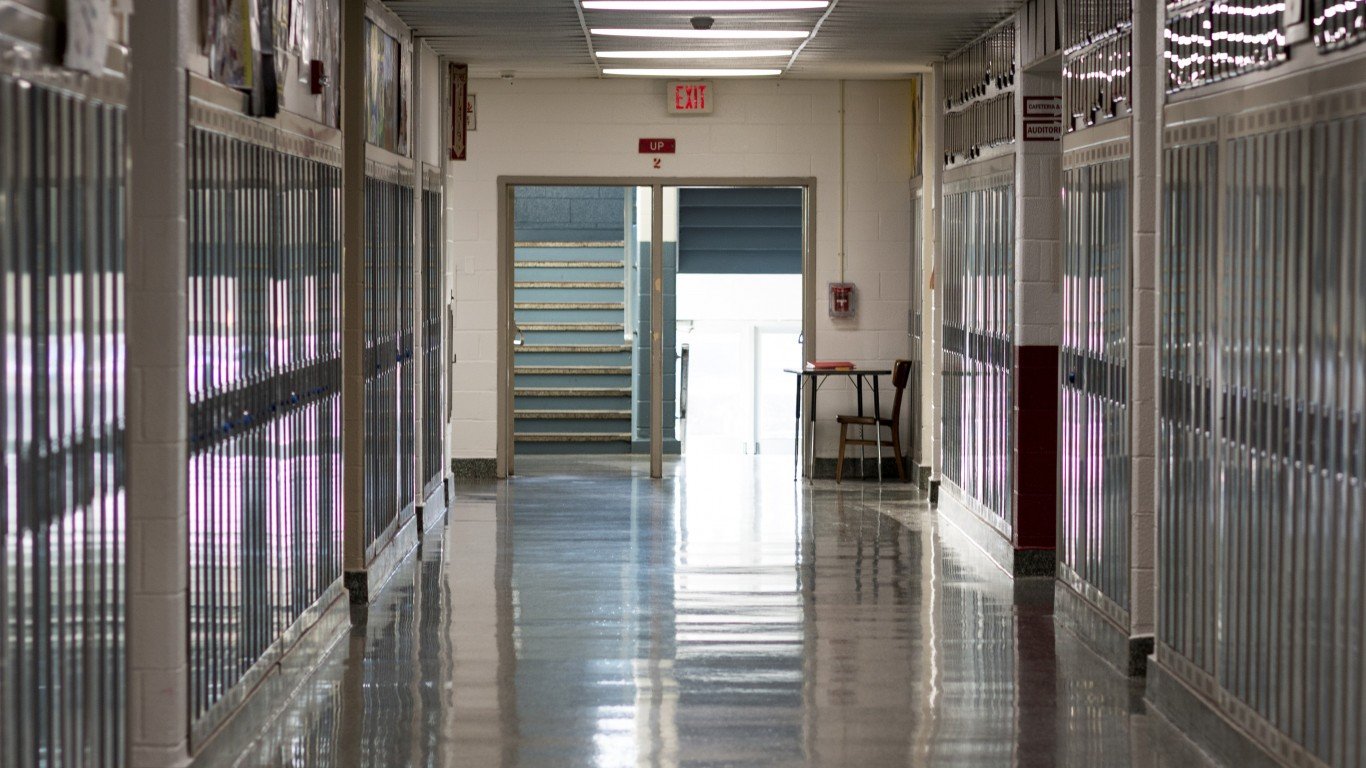
Kansas
> Start of 2020-2021 academic year: Early-to-mid September
> Reopening plan: Based on community spread
> Re-closing schools: N/A
> Daily routine changes: Designate single entry and exit points, staggered arrival and dismissal times, change bell schedule to minimize foot traffic
> Mask or face covering rules: REquired for staff, visitors, and most students
> Health screening precautions: Daily temperature checks for staff
> Cumulative COVID-19 cases as of Sep 15: 1,714 per 100,000 people — 22nd lowest (total: 49,899)
> Change in trailing 7-day avg. daily cases, Sep 7 – Sep 14: 6.4% — 14th largest increase (from 46,914 to 49,899)
> Population: 2.9 million
[in-text-ad]
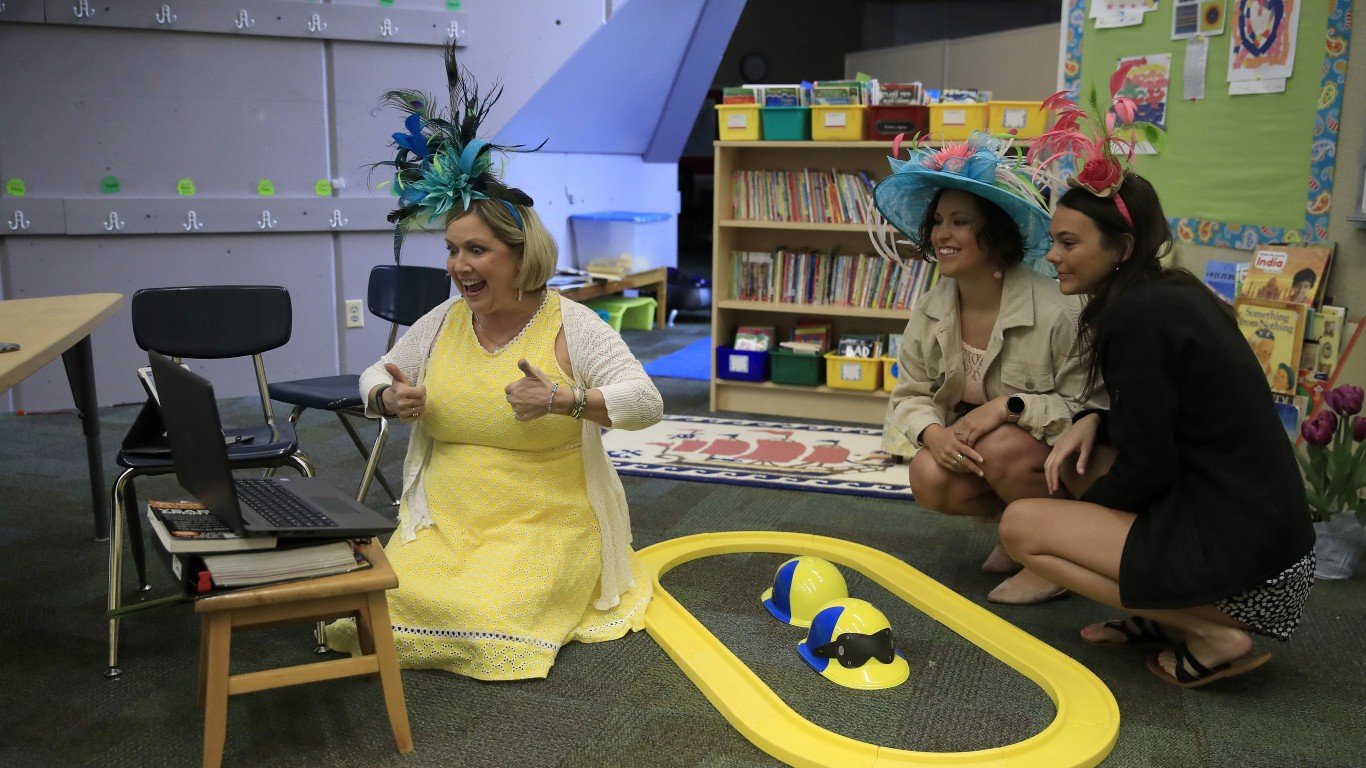
Kentucky
> Start of 2020-2021 academic year: Mid-to-late August
> Reopening plan: Distance learning or a full return to in-person instruction
> Re-closing schools: In mid-August one school in Clinton County moved classes online for 2 weeks after a student tested positive
> Daily routine changes: Schedule arrival and dismissal times, direct traffic flow in hallways, assigned seating, schools may bring small groups of students for tutoring
> Mask or face covering rules: Recommended or required, depending on local virus transmission level
> Health screening precautions: Daily temperature checks
> Cumulative COVID-19 cases as of Sep 15: 1,298 per 100,000 people — 16th lowest (total: 58,000)
> Change in trailing 7-day avg. daily cases, Sep 7 – Sep 14: 7.9% — 12th largest increase (from 53,064 to 57,282)
> Population: 4.5 million
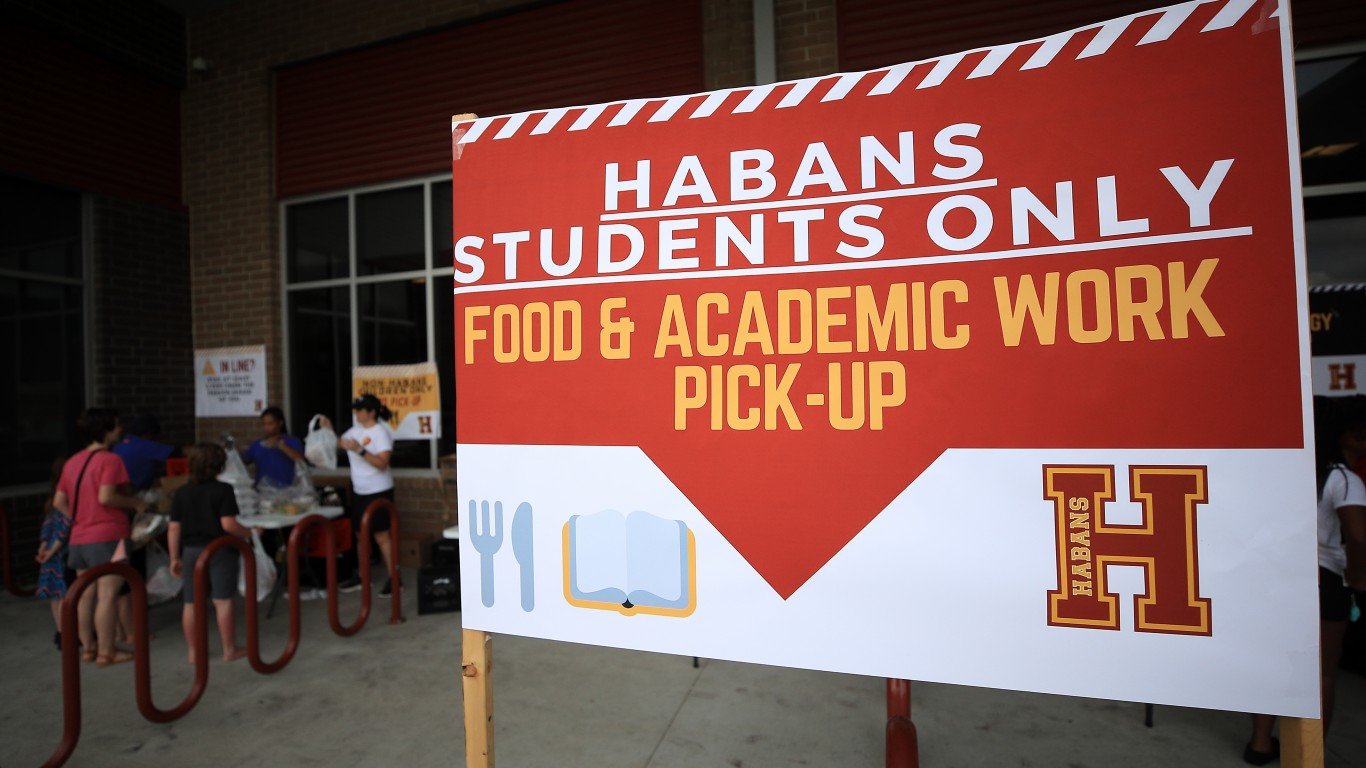
Louisiana
> Start of 2020-2021 academic year: Early August
> Reopening plan: Reopen in phases, up to each school
> Re-closing schools: Several schools in Louisiana closed to in-person learning in August after students and staff members tested positive for COVID-19
> Daily routine changes: Hand-washing at least every two hours, remain separated even outdoors, maintain social distancing
> Mask or face covering rules: Required, students who can’t wear them will be in static groups
> Health screening precautions: Daily symptom screening and temperature checks
> Cumulative COVID-19 cases as of Sep 15: 3,397 per 100,000 people — the highest (total: 158,318)
> Change in trailing 7-day avg. daily cases, Sep 7 – Sep 14: 3.1% — 11th smallest increase (from 153,177 to 157,947)
> Population: 4.7 million

Maine
> Start of 2020-2021 academic year: Mid-August
> Reopening plan: Based on community spread, many choose a hybrid model
> Re-closing schools: One school district delayed the start of the academic year by a week until Sept. 14 after a staff member tested positive. St. Dominic Academy said on Sept. 15 that its Lewiston campus will remain closed through Sept. 28 after 2 students tested positive.
> Daily routine changes: Interdisciplinary courses, social distancing is required during lunch
> Mask or face covering rules: Required for adults, required for students age 5+
> Health screening precautions: Daily self-checks for students and staff
> Cumulative COVID-19 cases as of Sep 15: 367 per 100,000 people — 2nd lowest (total: 4,918)
> Change in trailing 7-day avg. daily cases, Sep 7 – Sep 14: 4.3% — 22nd smallest increase (from 4,701 to 4,903)
> Population: 1.3 million
[in-text-ad-2]
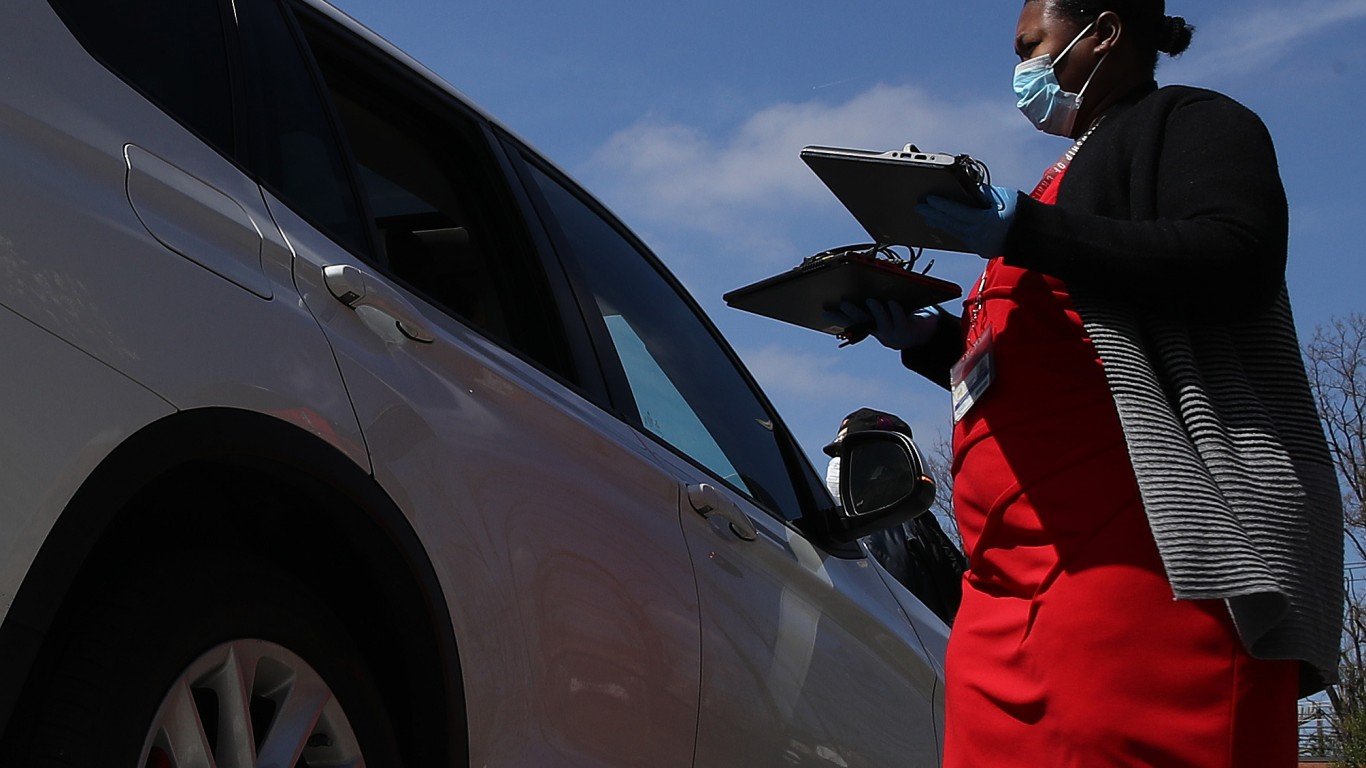
Maryland
> Start of 2020-2021 academic year: Late August
> Reopening plan: Up to each district
> Re-closing schools: At least one prep school temporarily closed for 2 days in mid-August after 2 staff members tested positive
> Daily routine changes: Restrict students from changing classrooms, stagger school bus schedules, one way routes in hallways
> Mask or face covering rules: Recommended
> Health screening precautions: Daily temperature checks for staff
> Cumulative COVID-19 cases as of Sep 15: 1,940 per 100,000 people — 21st highest (total: 117,245)
> Change in trailing 7-day avg. daily cases, Sep 7 – Sep 14: 3.3% — 15th smallest increase (from 112,883 to 116,646)
> Population: 6.0 million
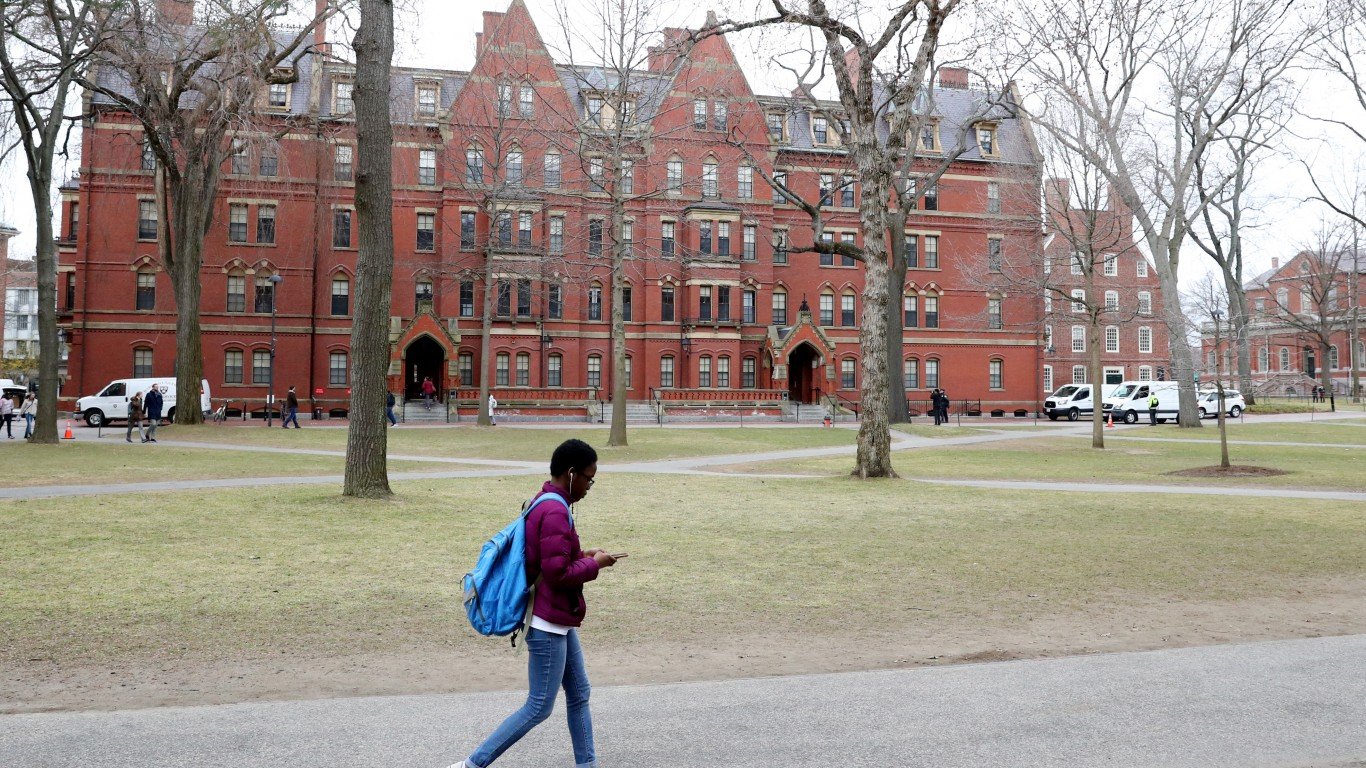
Massachusetts
> Start of 2020-2021 academic year: Late August
> Reopening plan: Up to each district, based on community spread
> Re-closing schools: Salem summer programs were closed for a week in mid-August after one staff member tested positive
> Daily routine changes: Limit traffic in hallways, spend time in same groups
> Mask or face covering rules: Required for grade 2 and up, encouraged for the rest
> Health screening precautions: Temperature checks are not recommended
> Cumulative COVID-19 cases as of Sep 15: 1,788 per 100,000 people — 24th lowest (total: 123,425)
> Change in trailing 7-day avg. daily cases, Sep 7 – Sep 14: 1.7% — 4th smallest increase (from 121,046 to 123,139)
> Population: 6.9 million
[in-text-ad]
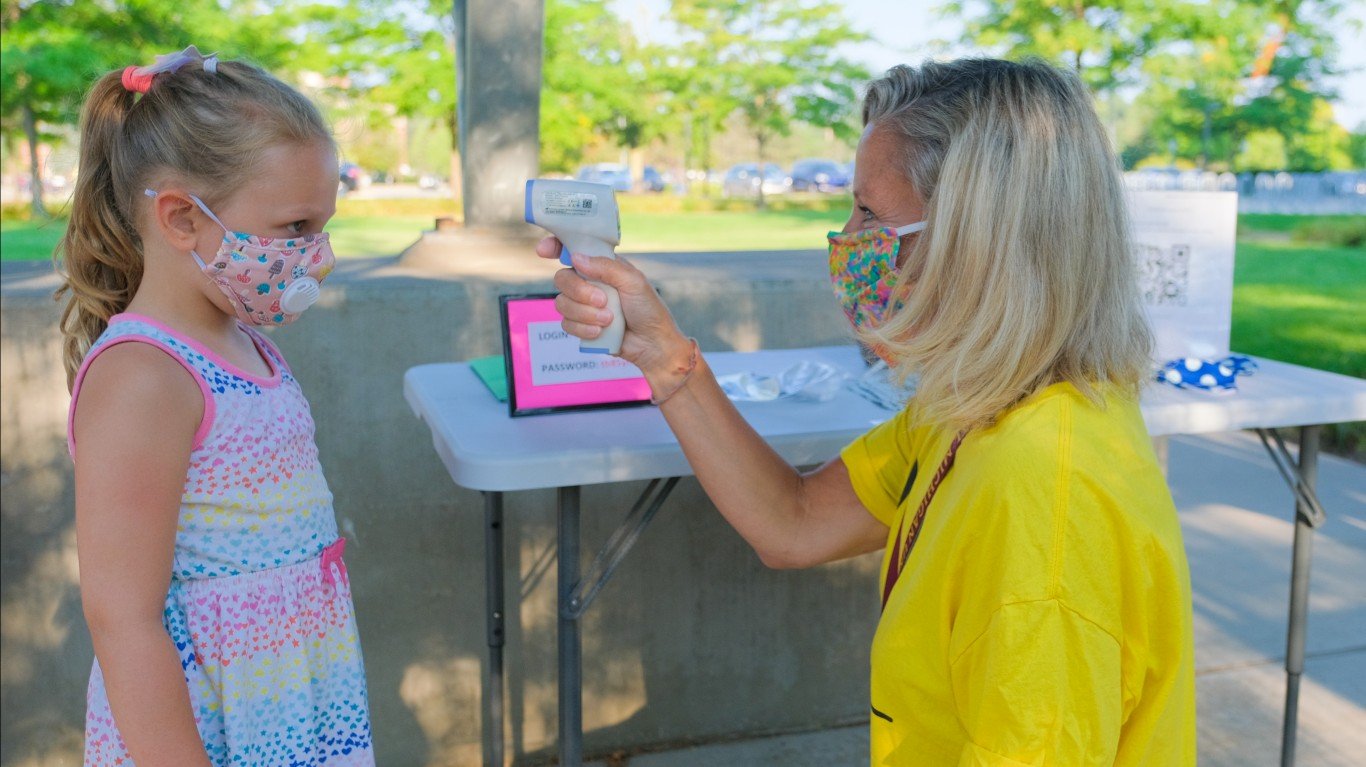
Michigan
> Start of 2020-2021 academic year: Early-to-mid September
> Reopening plan: Up to each district, online classes must be an option
> Re-closing schools: At least one high school closed for 2 weeks until Sept. 11 after 5 students and one staff member tested positive
> Daily routine changes: Reinforce proper hand-washing techniques required, hand-washing every 2-3 hours, limit use of classroom materials
> Mask or face covering rules: Required for some
> Health screening precautions: Daily temperature checks recommended
> Cumulative COVID-19 cases as of Sep 15: 1,250 per 100,000 people — 14th lowest (total: 124,969)
> Change in trailing 7-day avg. daily cases, Sep 7 – Sep 14: 5.0% — 23rd largest increase (from 118,403 to 124,287)
> Population: 10.0 million
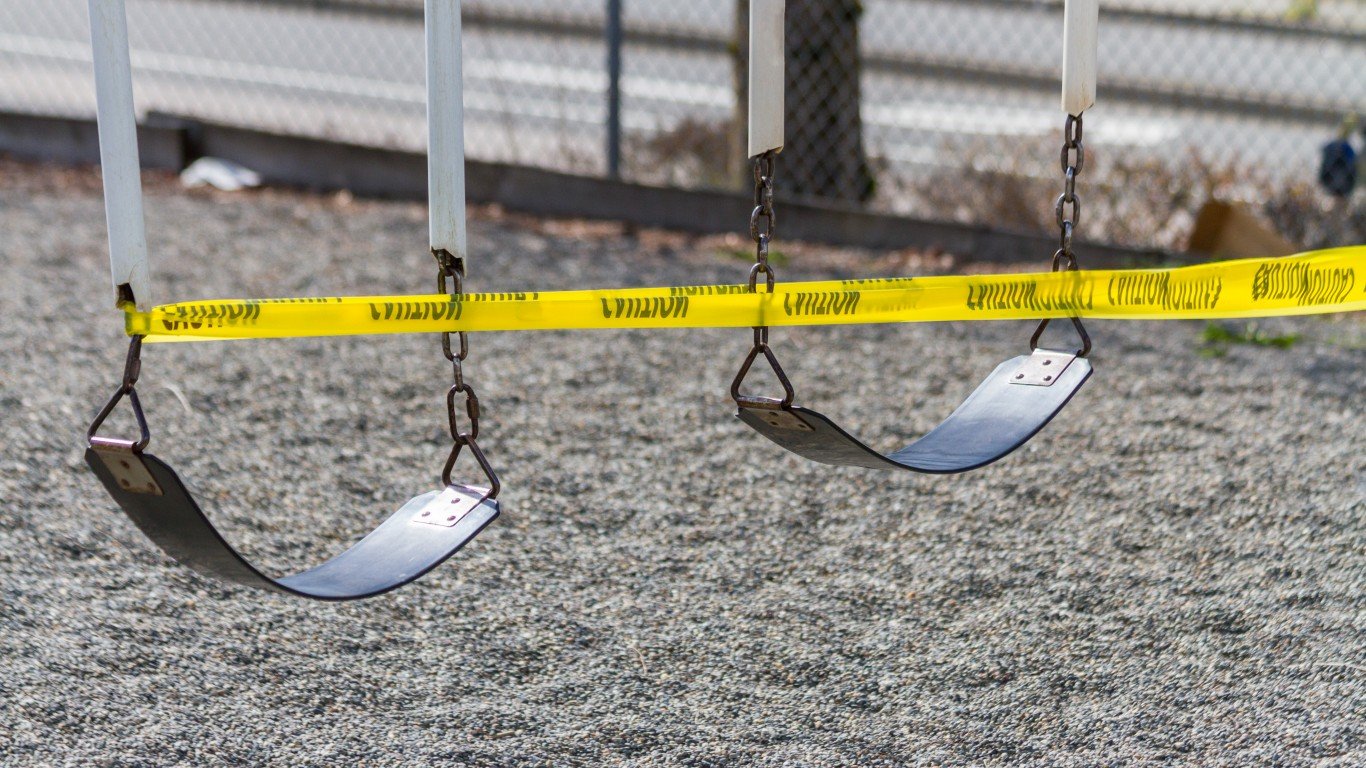
Minnesota
> Start of 2020-2021 academic year: Early-to-mid September
> Reopening plan: Up to each district
> Re-closing schools: One school district delayed the start of the new academic year after a staff member tested positive. One county switched to hybrid model after a spike of COVID-19 cases in the area
> Daily routine changes: Schedule hygiene routines, floor/seating markings in common areas, arrival and dismissal monitored
> Mask or face covering rules: Required for students, staff, and others in schools, offices, and transportation
> Health screening precautions: Daily symptom screening and temperature checks
> Cumulative COVID-19 cases as of Sep 15: 1,521 per 100,000 people — 17th lowest (total: 85,351)
> Change in trailing 7-day avg. daily cases, Sep 7 – Sep 14: 4.6% — 24th smallest increase (from 81,225 to 84,949)
> Population: 5.6 million

Mississippi
> Start of 2020-2021 academic year: Early August
> Reopening plan: Up to each district, start delayed in some schools
> Re-closing schools: In mid-August more than 2,000 students and nearly 500 teachers were quarantined after 245 teachers and 199 students tested positive
> Daily routine changes: Stagger cafeteria use
> Mask or face covering rules: Required if social distancing is difficult
> Health screening precautions: Daily symptom screening and temperature checks
> Cumulative COVID-19 cases as of Sep 15: 3,031 per 100,000 people — 3rd highest (total: 90,523)
> Change in trailing 7-day avg. daily cases, Sep 7 – Sep 14: 3.3% — 14th smallest increase (from 87,130 to 90,018)
> Population: 3.0 million
[in-text-ad-2]
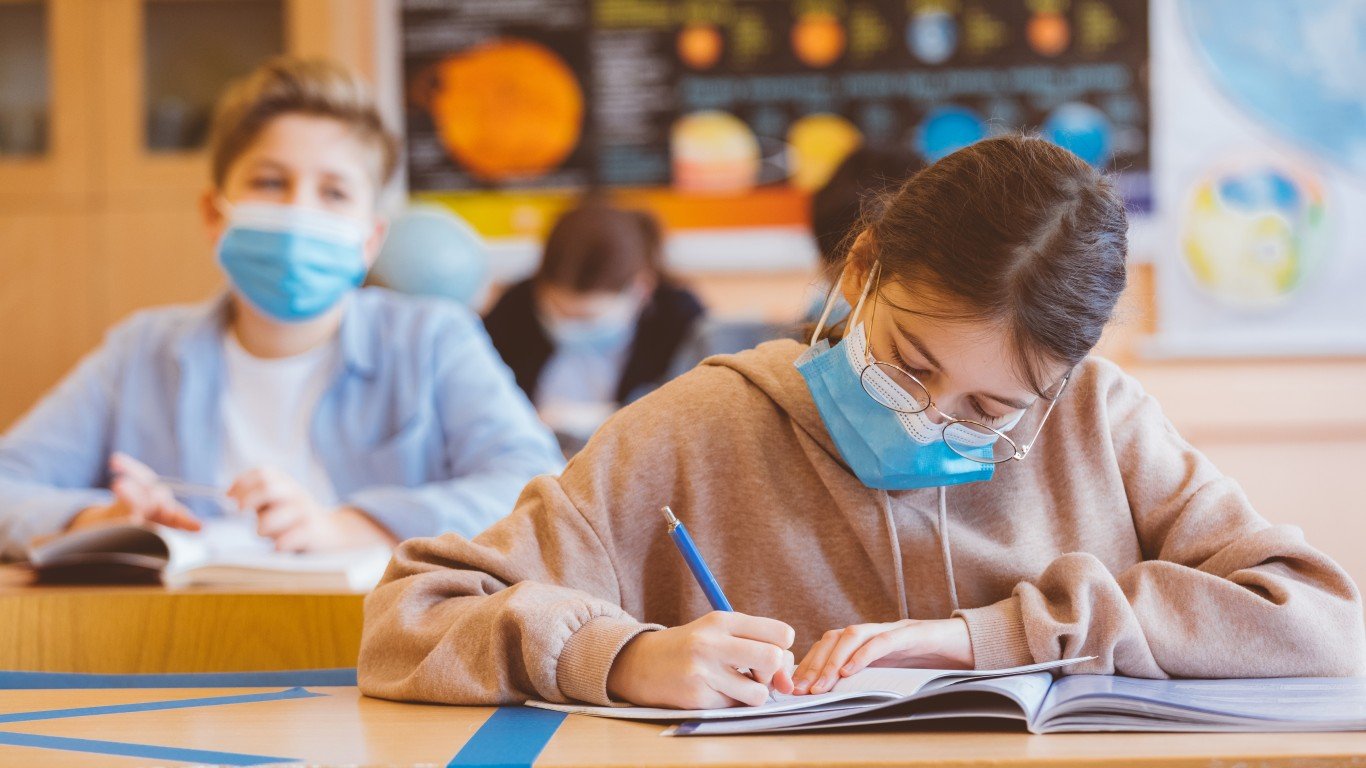
Missouri
> Start of 2020-2021 academic year: Late August
> Reopening plan: Up to each district
> Re-closing schools: At least one school district closed temporarily until Sept. 4 after a staff member tested positive for COVID-19. Classes were moved online
> Daily routine changes: Assigned seating, lunch in classrooms
> Mask or face covering rules: Recommended if social distancing is difficult
> Health screening precautions: Daily symptom screening.
> Cumulative COVID-19 cases as of Sep 15: 1,720 per 100,000 people — 23rd lowest (total: 105,359)
> Change in trailing 7-day avg. daily cases, Sep 7 – Sep 14: 10.3% — 3rd largest increase (from 94,304 to 104,041)
> Population: 6.1 million
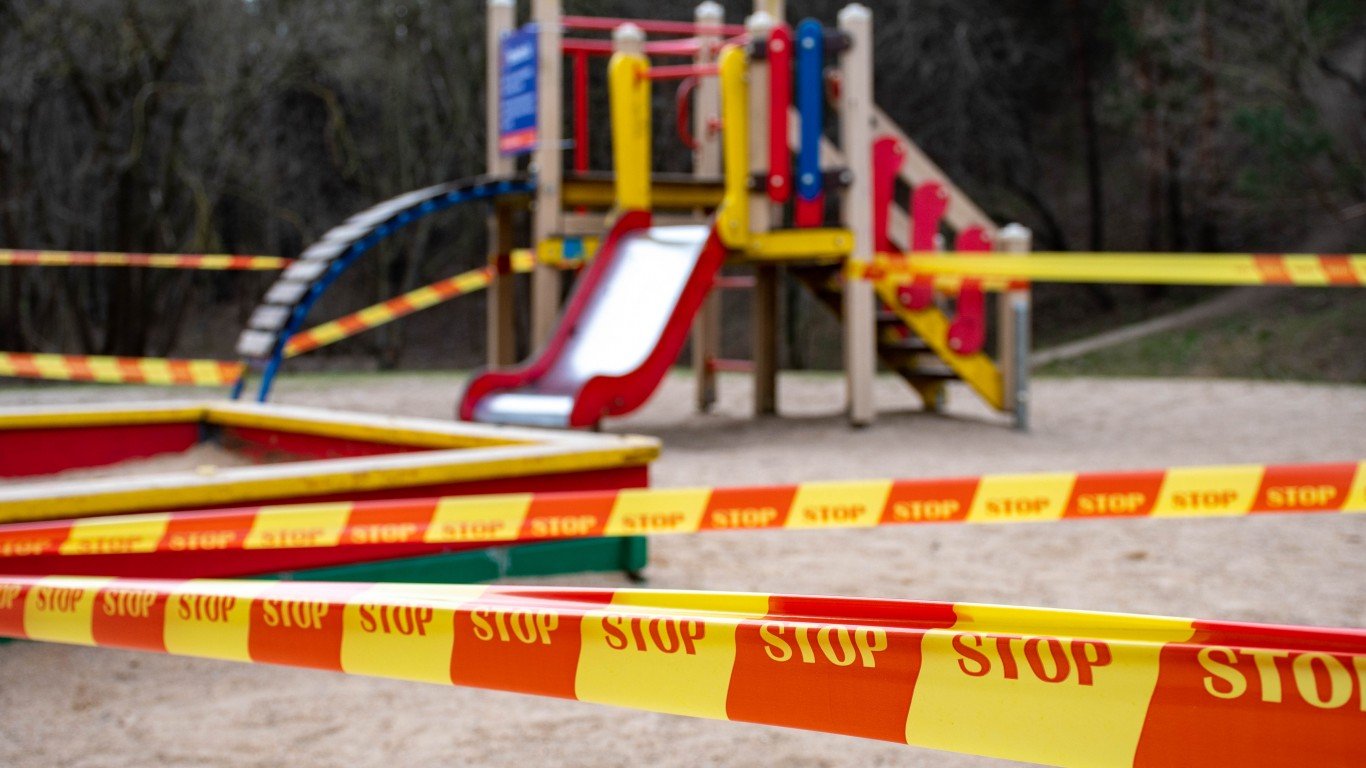
Montana
> Start of 2020-2021 academic year: Late August
> Reopening plan: Hybrid model, half days
> Re-closing schools: At the end of August, middle schools and high schools in Hardin paused all fall sports for 2 weeks after several students tested positive. Great Falls High School was closed Sept. 14-15 after new cases of COVID-19 were reported.
> Daily routine changes: Lunch in classrooms, staggered arrival times
> Mask or face covering rules: Recommended for all students and staff
> Health screening precautions: Visitor temperature checks
> Cumulative COVID-19 cases as of Sep 15: 870 per 100,000 people — 8th lowest (total: 9,244)
> Change in trailing 7-day avg. daily cases, Sep 7 – Sep 14: 9.5% — 6th largest increase (from 8,316 to 9,107)
> Population: 1.1 million
[in-text-ad]
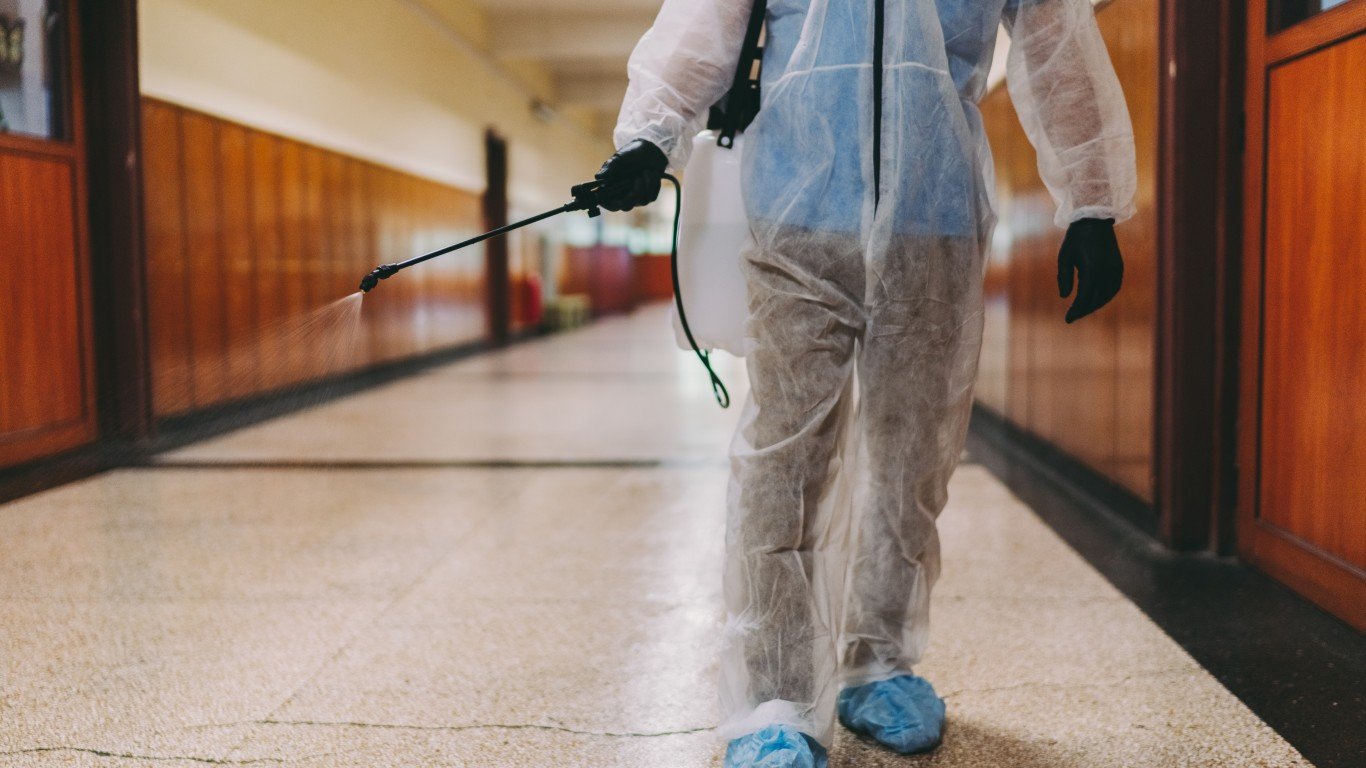
Nebraska
> Start of 2020-2021 academic year: Mid-August
> Reopening plan: Up to each district, based on community spread, start postponed until Sept. 16, academic year cut to 170 days
> Re-closing schools: At least one district closed schools for grades 6-12 for 2 weeks until Aug. 24 after 3 staff members tested positive. Lincoln Elementary School in Beatrice moved in late-August to tier four remote learning for several weeks after several new COVID-19 cases
> Daily routine changes: Frequent hand-washing, limit use of school materials, keep personal items separate
> Mask or face covering rules: Up to each school
> Health screening precautions: Visitors wash hands before entering the school, symptom self-screen
> Cumulative COVID-19 cases as of Sep 15: 2,020 per 100,000 people — 19th highest (total: 38,970)
> Change in trailing 7-day avg. daily cases, Sep 7 – Sep 14: 6.8% — 13th largest increase (from 35,886 to 38,335)
> Population: 1.9 million
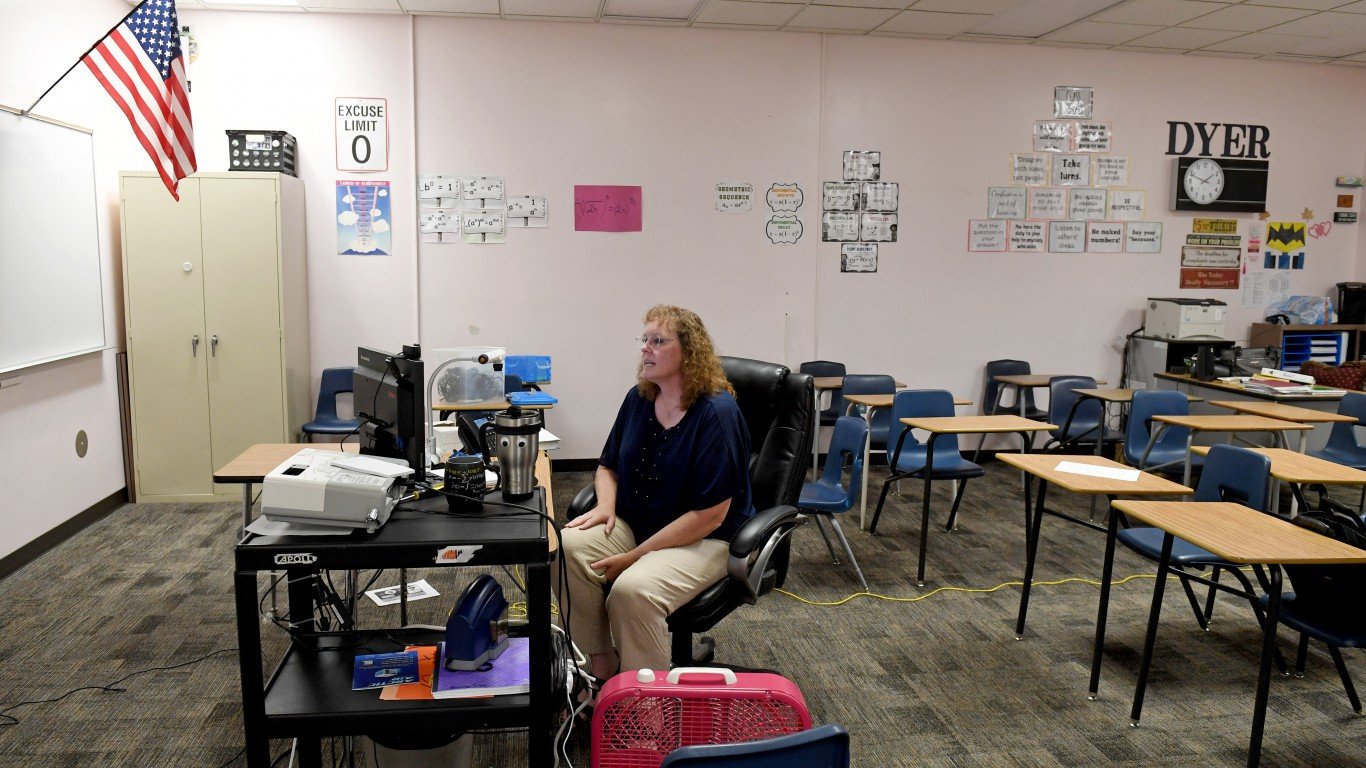
Nevada
> Start of 2020-2021 academic year: Mid-August
> Reopening plan: Up to each district
> Re-closing schools: At least one elementary school was temporarily closed after one suspected positive case that may have exposed 8 people
> Daily routine changes: Limit use of common areas like playgrounds, teachers rotate, not students, restroom rotation
> Mask or face covering rules: Recommended for staff and students
> Health screening precautions: Daily symptom screening and temperature checks recommended, post signs about proper hand-washing and other ways to stop the virus
> Cumulative COVID-19 cases as of Sep 15: 2,440 per 100,000 people — 9th highest (total: 74,040)
> Change in trailing 7-day avg. daily cases, Sep 7 – Sep 14: 2.6% — 5th smallest increase (from 71,967 to 73,814)
> Population: 3.0 million
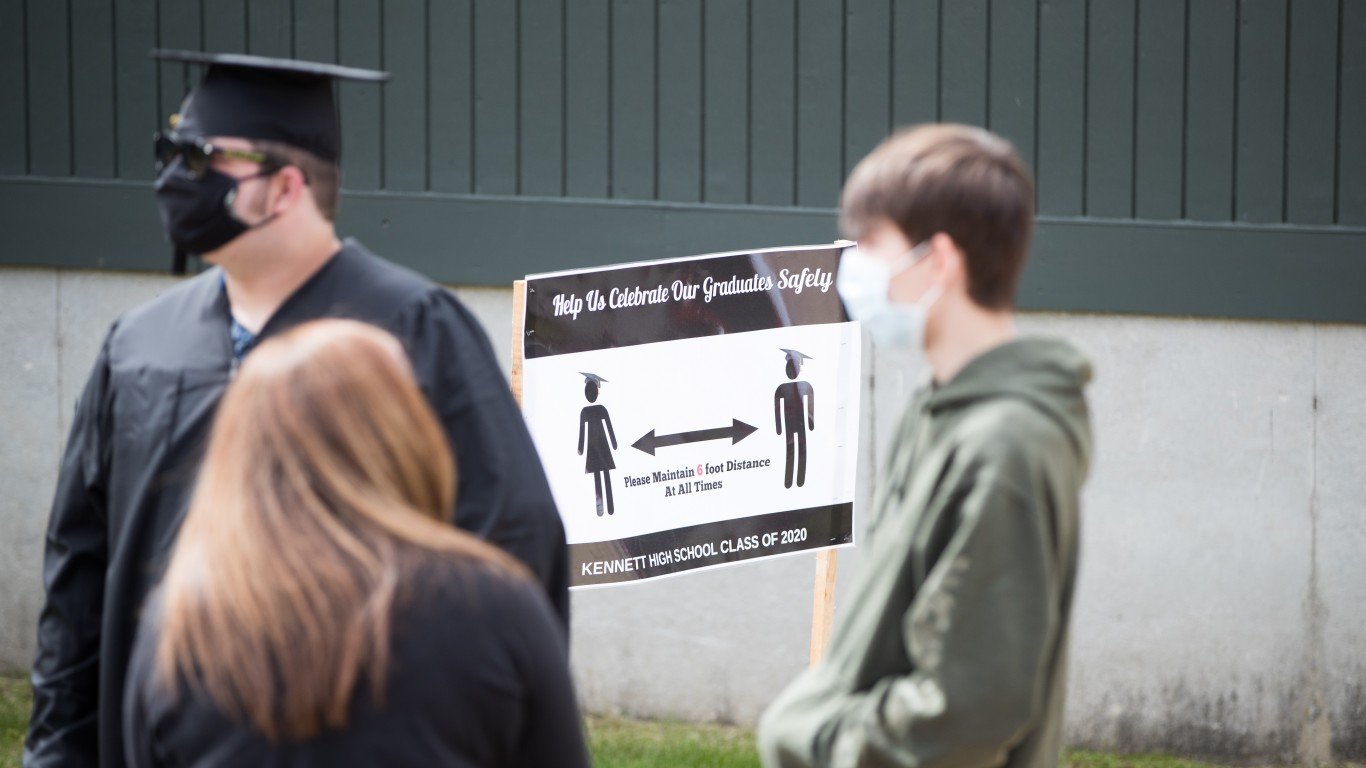
New Hampshire
> Start of 2020-2021 academic year: Late August
> Reopening plan: Up to each district
> Re-closing schools: One high school moved classes online for 3 days and suspended sports indefinitely after several students tested positive
> Daily routine changes: Stagger dismissal, stagger meal times, serve lunch in classroom, monitor hallways to direct movement, assigned seating
> Mask or face covering rules: Recommended
> Health screening precautions: Daily symptom screenings for staff, students
> Cumulative COVID-19 cases as of Sep 15: 571 per 100,000 people — 3rd lowest (total: 7,748)
> Change in trailing 7-day avg. daily cases, Sep 7 – Sep 14: 3.2% — 12th smallest increase (from 7,476 to 7,714)
> Population: 1.4 million
[in-text-ad-2]
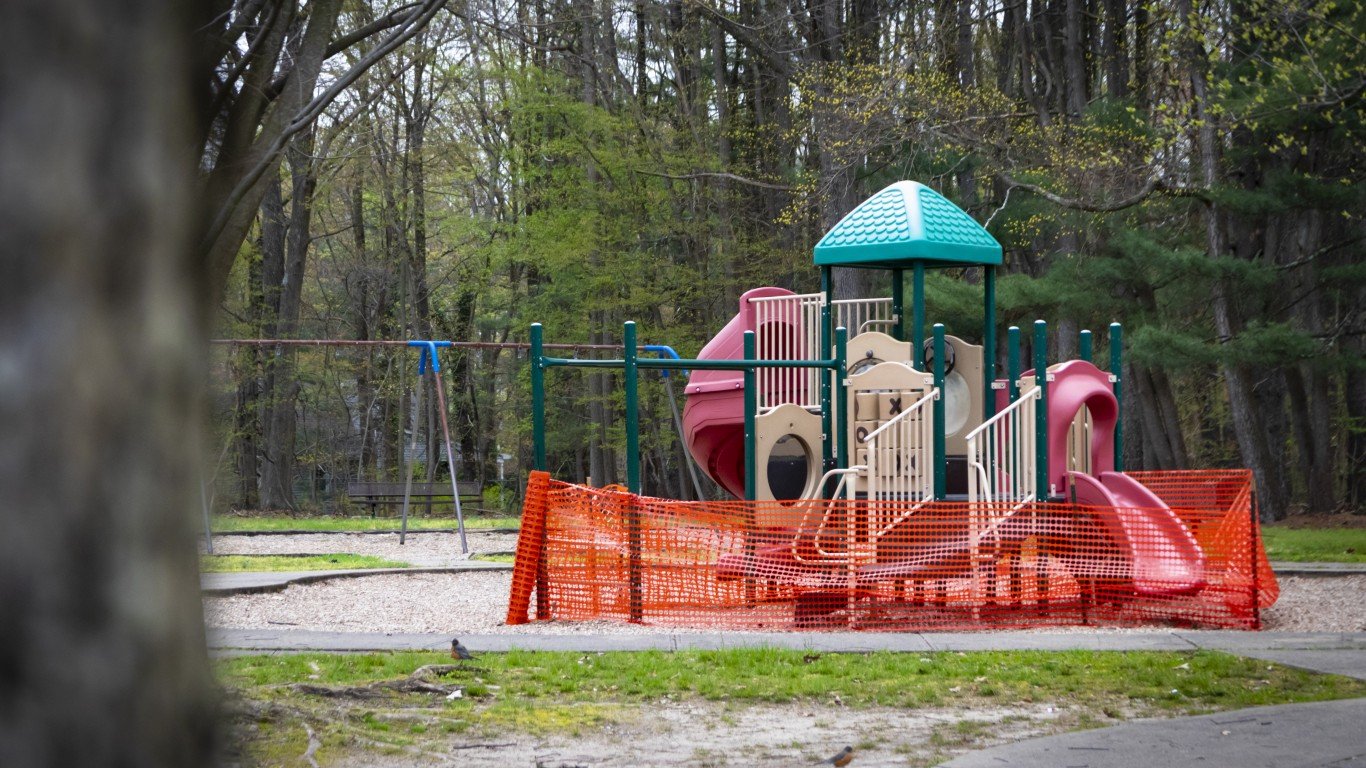
New Jersey
> Start of 2020-2021 academic year: Early September
> Reopening plan: Up to each district, most return with a hybrid model
> Re-closing schools: At least 6 school districts announced in mid-September schedule changes just days into the academic year in response to coronavirus cases among students and staff.
> Daily routine changes: Staggering meal times, recess held in staggered shifts, gym classes in marked areas
> Mask or face covering rules: Required for school staff and visitors
> Health screening precautions: Daily symptom screening and history of exposure
> Cumulative COVID-19 cases as of Sep 15: 2,216 per 100,000 people — 14th highest (total: 197,404)
> Change in trailing 7-day avg. daily cases, Sep 7 – Sep 14: 1.3% — 2nd smallest increase (from 194,390 to 196,968)
> Population: 8.9 million
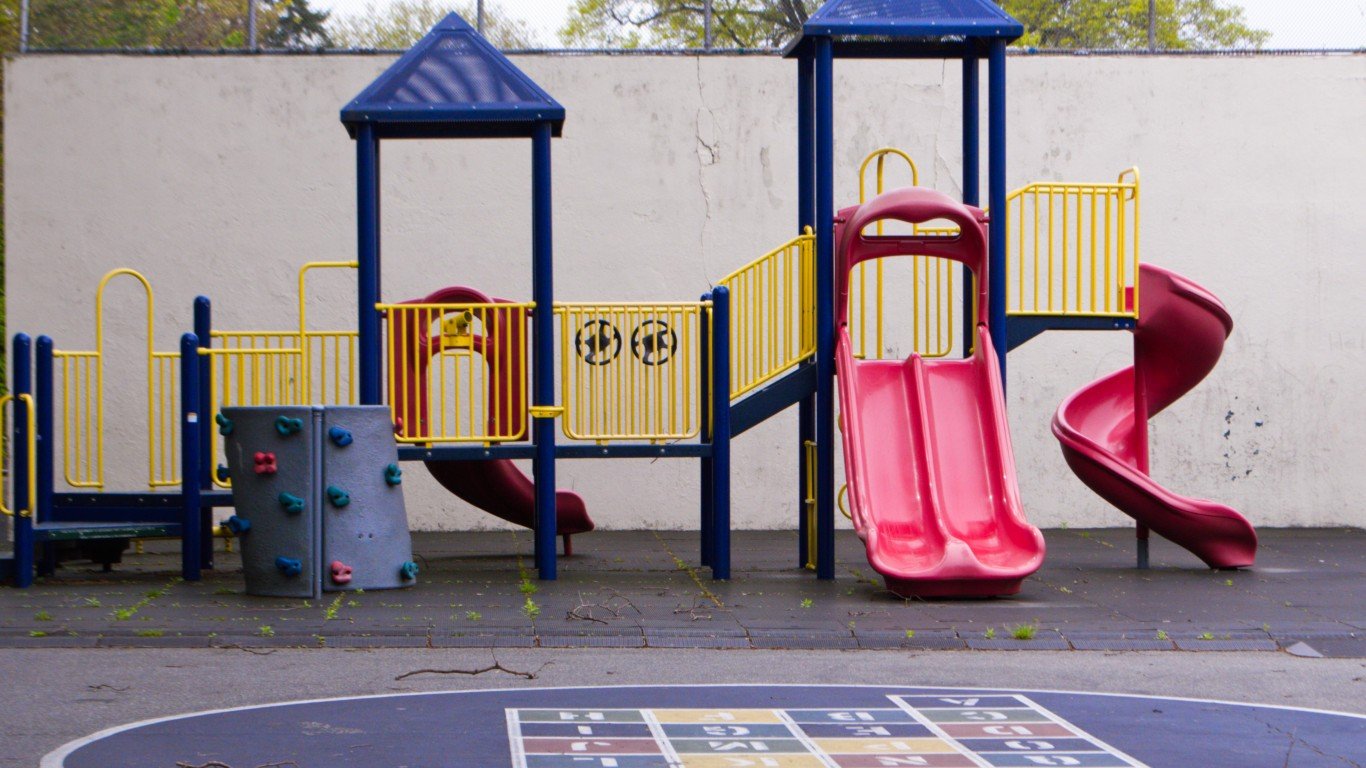
New Mexico
> Start of 2020-2021 academic year: Early September
> Reopening plan: School year will start remotely the first few weeks
> Re-closing schools: N/A
> Daily routine changes: Longer meal periods, no large gatherings, limit mixing between groups,staggered class changed
> Mask or face covering rules: Required for students and staff
> Health screening precautions: Daily temperature checks
> Cumulative COVID-19 cases as of Sep 15: 1,285 per 100,000 people — 15th lowest (total: 26,923)
> Change in trailing 7-day avg. daily cases, Sep 7 – Sep 14: 2.7% — 6th smallest increase (from 26,144 to 26,842)
> Population: 2.1 million
[in-text-ad]
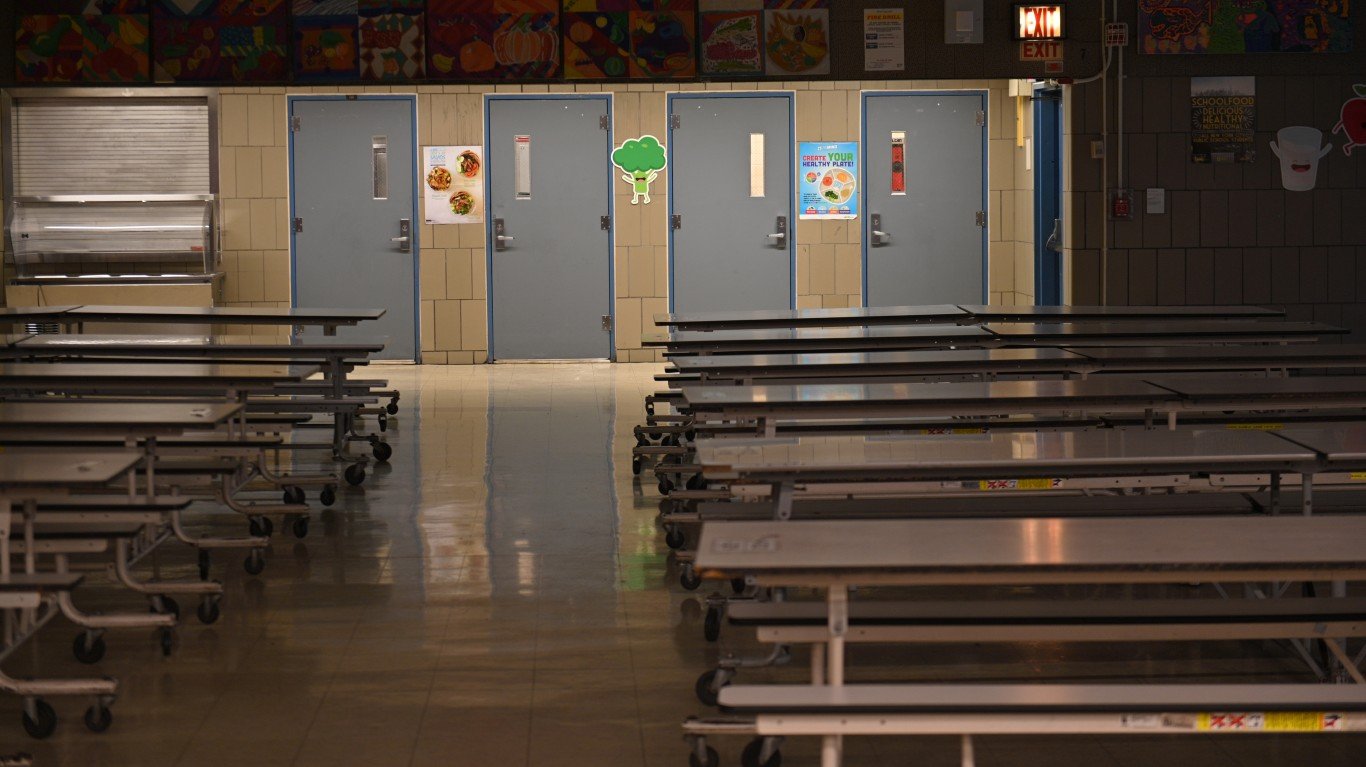
New York
> Start of 2020-2021 academic year: Late September
> Reopening plan: Based on community spread, NYC allowing outdoor learning
> Re-closing schools: N/A
> Daily routine changes: Lunch in classroom, restrict use of hallways, frequent hand-washing, limit gatherings in small spaces
> Mask or face covering rules: Required if social distancing is difficult
> Health screening precautions: Daily temperature checks for all
> Cumulative COVID-19 cases as of Sep 15: 2,281 per 100,000 people — 13th highest (total: 445,714)
> Change in trailing 7-day avg. daily cases, Sep 7 – Sep 14: 1.1% — the smallest increase (from 440,021 to 444,948)
> Population: 19.5 million
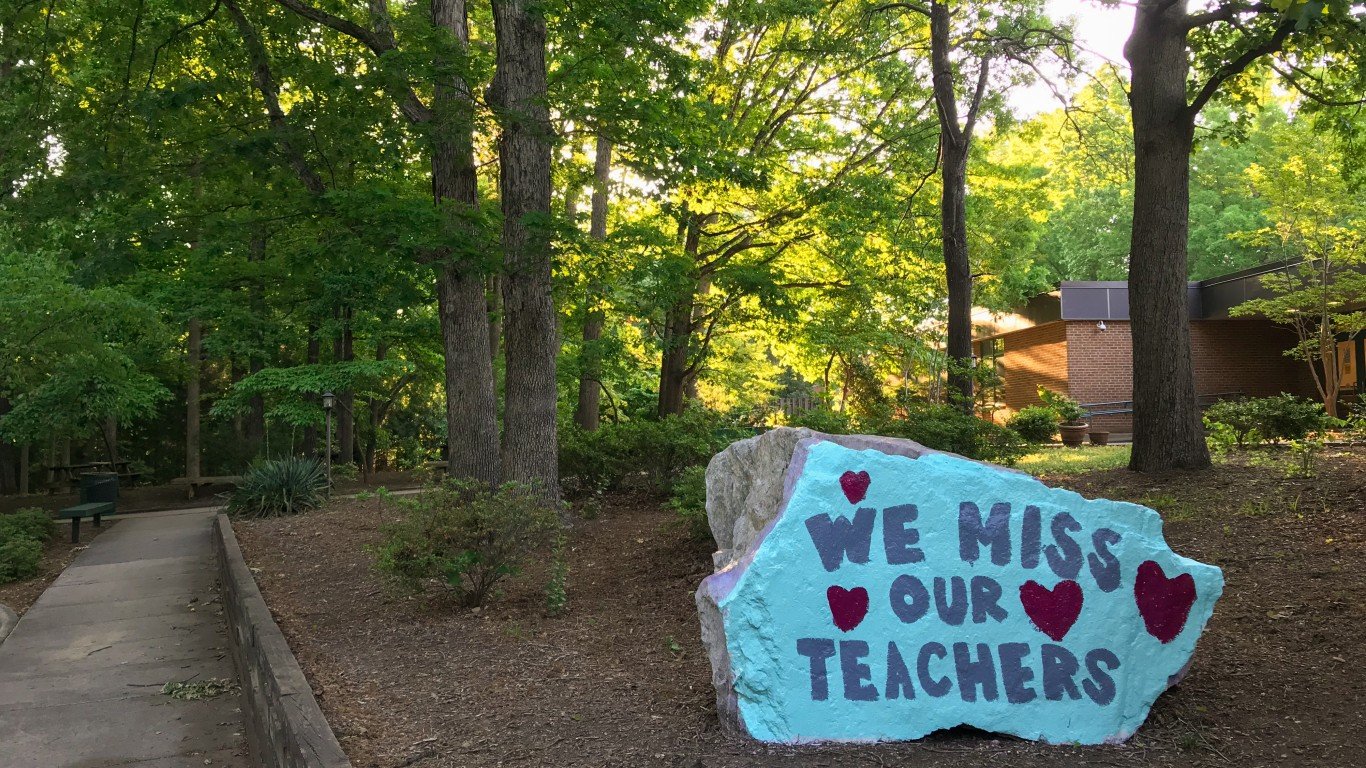
North Carolina
> Start of 2020-2021 academic year: Late August
> Reopening plan: Up to each district, most start year remote
> Re-closing schools: At least 3 schools temporarily closed and moved classes online after several students and teachers tested positive
> Daily routine changes: Frequent hand-washing, lunch in classrooms
> Mask or face covering rules: Required for teachers and students K-12
> Health screening precautions: Daily temperature checks
> Cumulative COVID-19 cases as of Sep 15: 1,800 per 100,000 people — 25th lowest (total: 186,887)
> Change in trailing 7-day avg. daily cases, Sep 7 – Sep 14: 4.4% — 23rd smallest increase (from 177,919 to 185,781)
> Population: 10.4 million
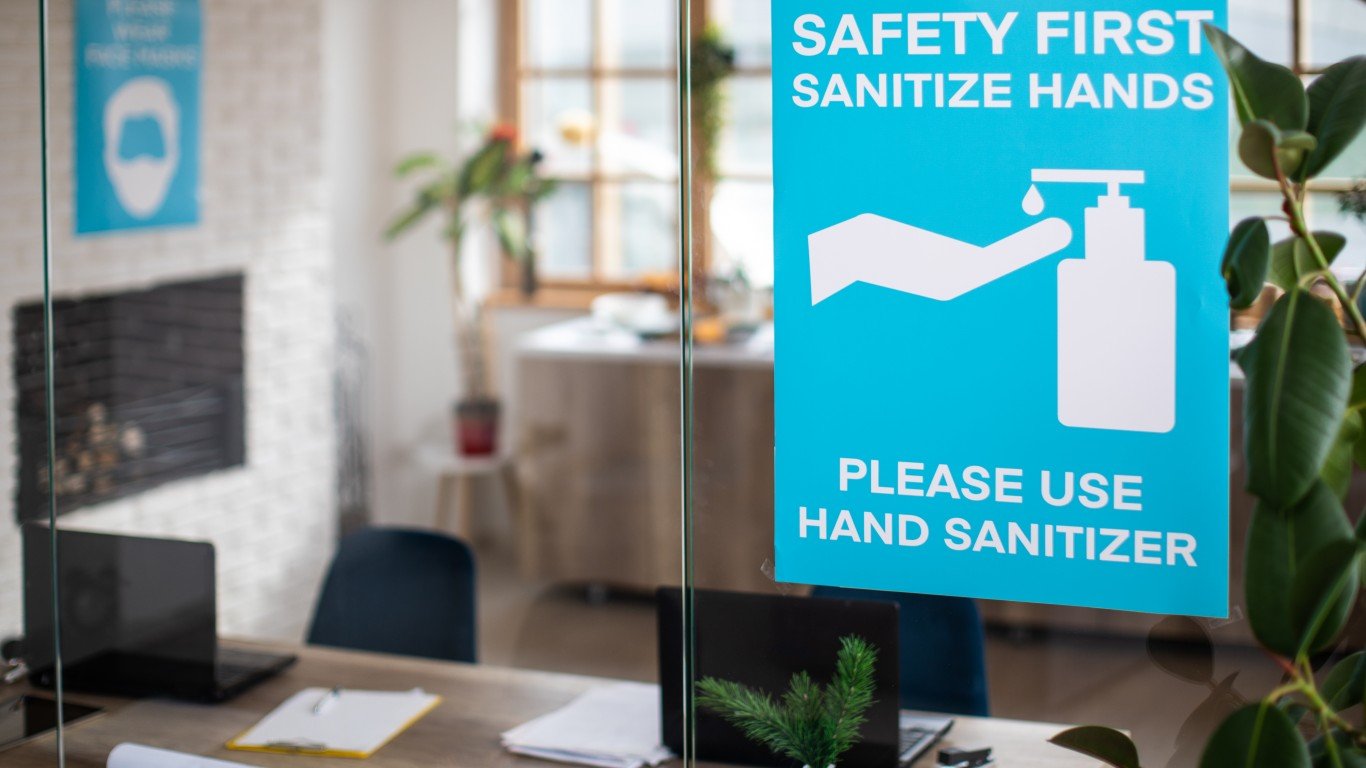
North Dakota
> Start of 2020-2021 academic year: Late August
> Reopening plan: Up to school district
> Re-closing schools: At least one school, which has about 40 students, closed down in the end of August until Sept. 11 after 2 students tested positive
> Daily routine changes: Students in same groups, group sizes should be no more than 15 people
> Mask or face covering rules: Recommended, especially if social distancing is difficult
> Health screening precautions: Testing for COVID-19 based on risk level
> Cumulative COVID-19 cases as of Sep 15: 2,113 per 100,000 people — 16th highest (total: 16,064)
> Change in trailing 7-day avg. daily cases, Sep 7 – Sep 14: 14.7% — the largest increase (from 13,801 to 15,831)
> Population: 760,000
[in-text-ad-2]
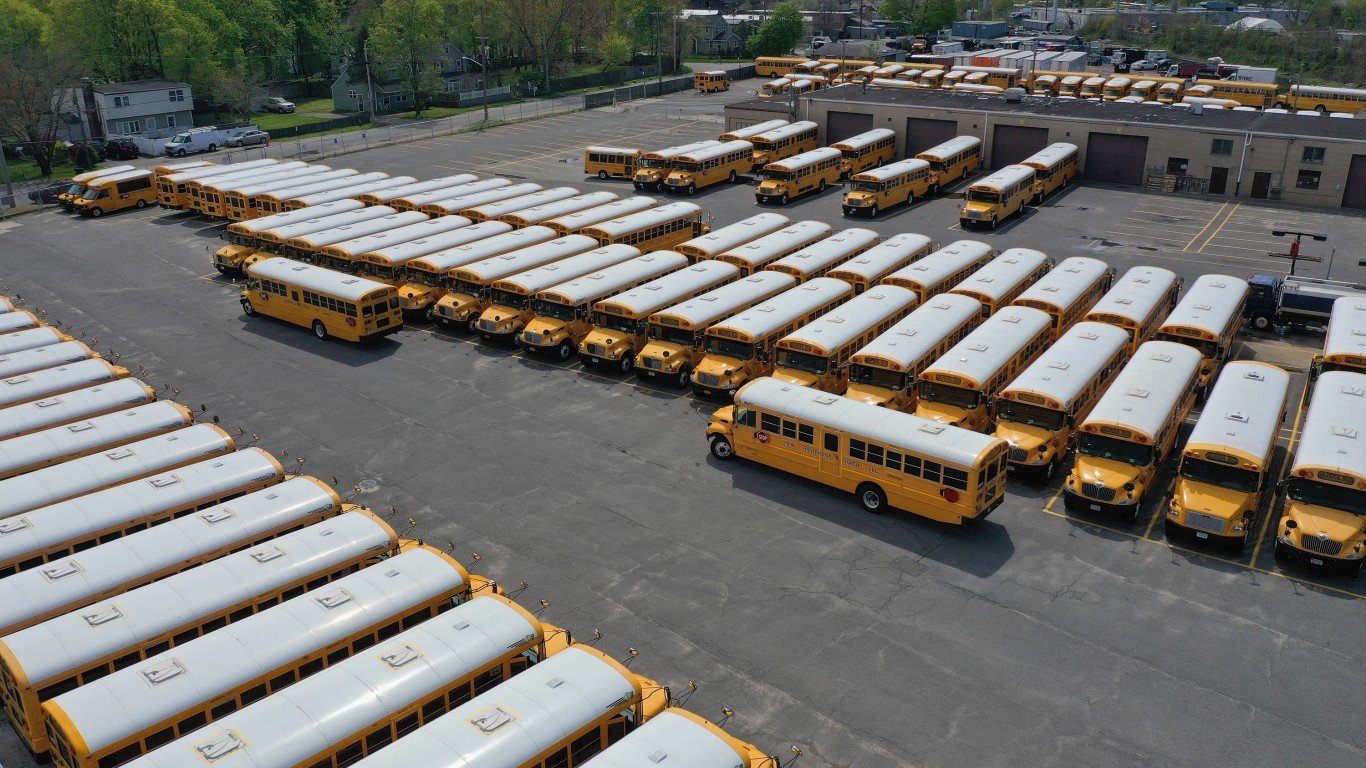
Ohio
> Start of 2020-2021 academic year: Mid-to-late August
> Reopening plan: Up to each district, most return for in-person instruction full-time
> Re-closing schools: The Mentor Public School District in Lake County shifted to online learning only after a teacher tested positive for COVID-19
> Daily routine changes: Frequent hand-washing, practice social distancing, scheduling half-days
> Mask or face covering rules: Required for staff
> Health screening precautions: Daily symptom screening
> Cumulative COVID-19 cases as of Sep 15: 1,193 per 100,000 people — 13th lowest (total: 139,485)
> Change in trailing 7-day avg. daily cases, Sep 7 – Sep 14: 5.4% — 21st largest increase (from 131,336 to 138,484)
> Population: 11.7 million
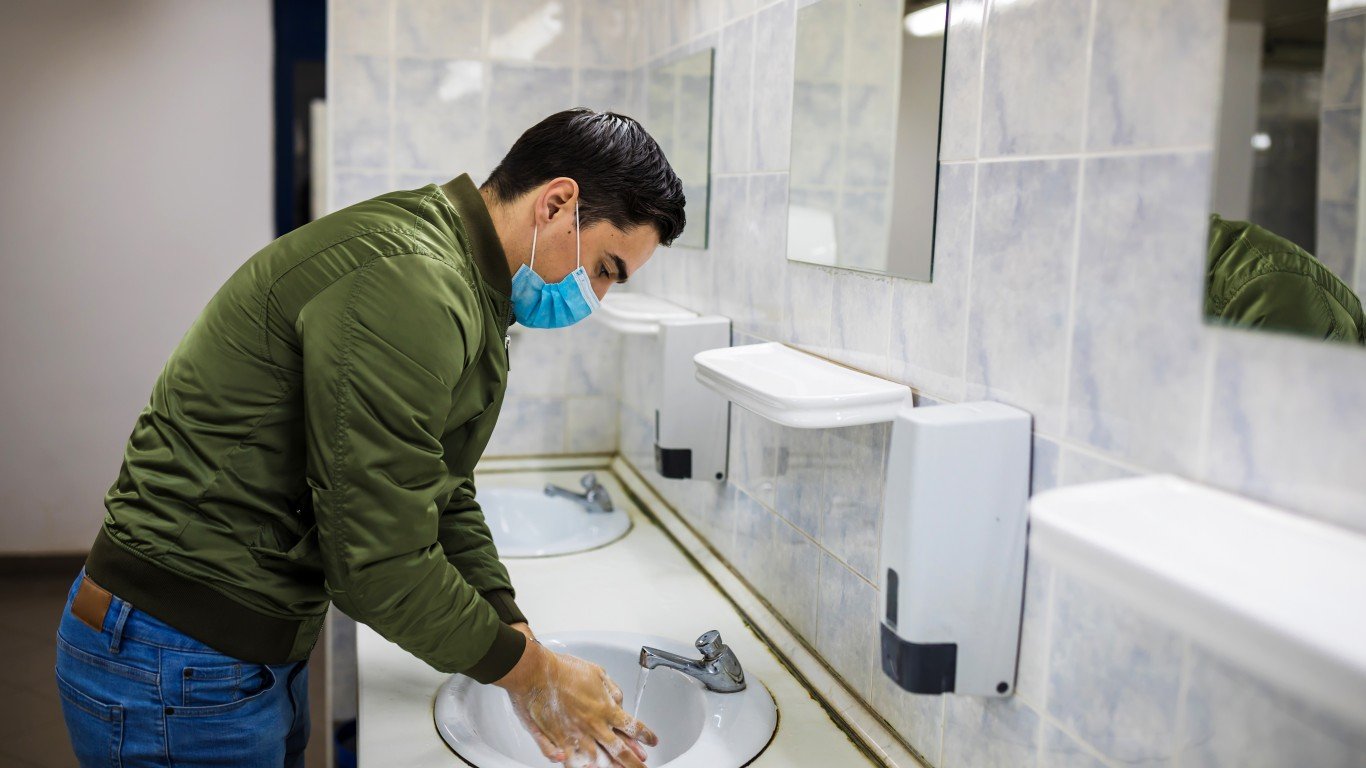
Oklahoma
> Start of 2020-2021 academic year: Mid-August
> Reopening plan: Up to each district
> Re-closing schools: Dozens of schools in Oklahoma reported that students and staff members tested positive for COVID-19. Some of the schools closed temporarily. On Sept. 14, Talihina Public Schools announced that following a positive test, the district’s high school and middle school students would transition to distance learning for 2 weeks.
> Daily routine changes: Lunch in classrooms, stagger recess times, keep students in groups in playgrounds, scheduled rotation of students
> Mask or face covering rules: Encouraged for staff and students
> Health screening precautions: Daily temperature checks at home recommended
> Cumulative COVID-19 cases as of Sep 15: 1,809 per 100,000 people — 25th highest (total: 71,314)
> Change in trailing 7-day avg. daily cases, Sep 7 – Sep 14: 9.3% — 7th largest increase (from 64,220 to 70,223)
> Population: 3.9 million
[in-text-ad]

Oregon
> Start of 2020-2021 academic year: Late August
> Reopening plan: Up to each district, based on community spread
> Re-closing schools: N/A
> Daily routine changes: Lunch in classroom, assigned restrooms, reduce mixing of students, teacher rotate, not students
> Mask or face covering rules: Required for staff and students
> Health screening precautions: Daily symptom screening and temperature checks
> Cumulative COVID-19 cases as of Sep 15: 708 per 100,000 people — 4th lowest (total: 29,662)
> Change in trailing 7-day avg. daily cases, Sep 7 – Sep 14: 4.6% — 25th smallest increase (from 28,190 to 29,484)
> Population: 4.2 million
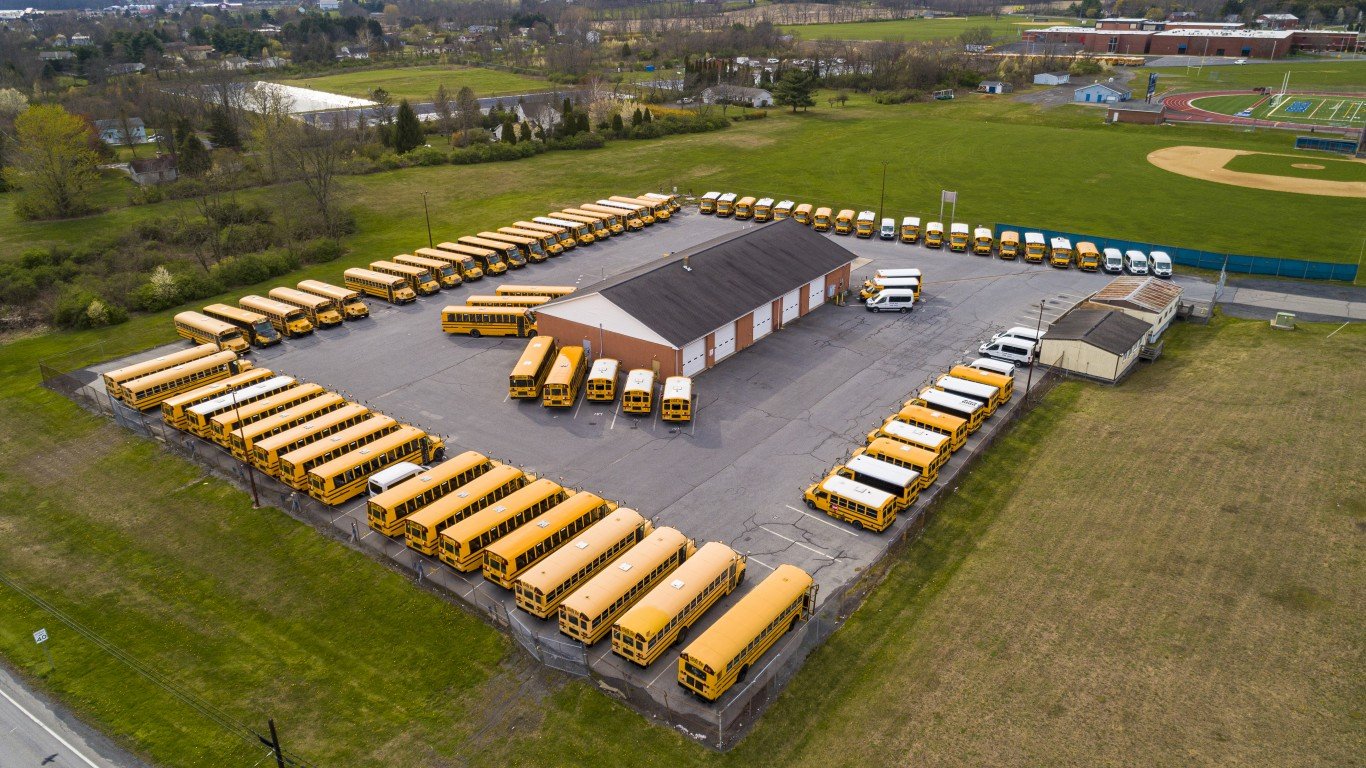
Pennsylvania
> Start of 2020-2021 academic year: Late August
> Reopening plan: Based on community spread
> Re-closing schools: At the beginning of August, 4 school districts in Mercer County cancelled school activities for 2 weeks after one student tested positive. Conestoga Valley High School in East Lampeter Township closed on Sept. 12 until Sept. 21 due to 3 confirmed cases and one probable case
> Daily routine changes: Lunch in classrooms, restricted interactions between groups
> Mask or face covering rules: Required if social distancing is difficult
> Health screening precautions: Daily symptom screening
> Cumulative COVID-19 cases as of Sep 15: 1,142 per 100,000 people — 12th lowest (total: 146,214)
> Change in trailing 7-day avg. daily cases, Sep 7 – Sep 14: 3.7% — 17th smallest increase (from 139,863 to 145,063)
> Population: 12.8 million
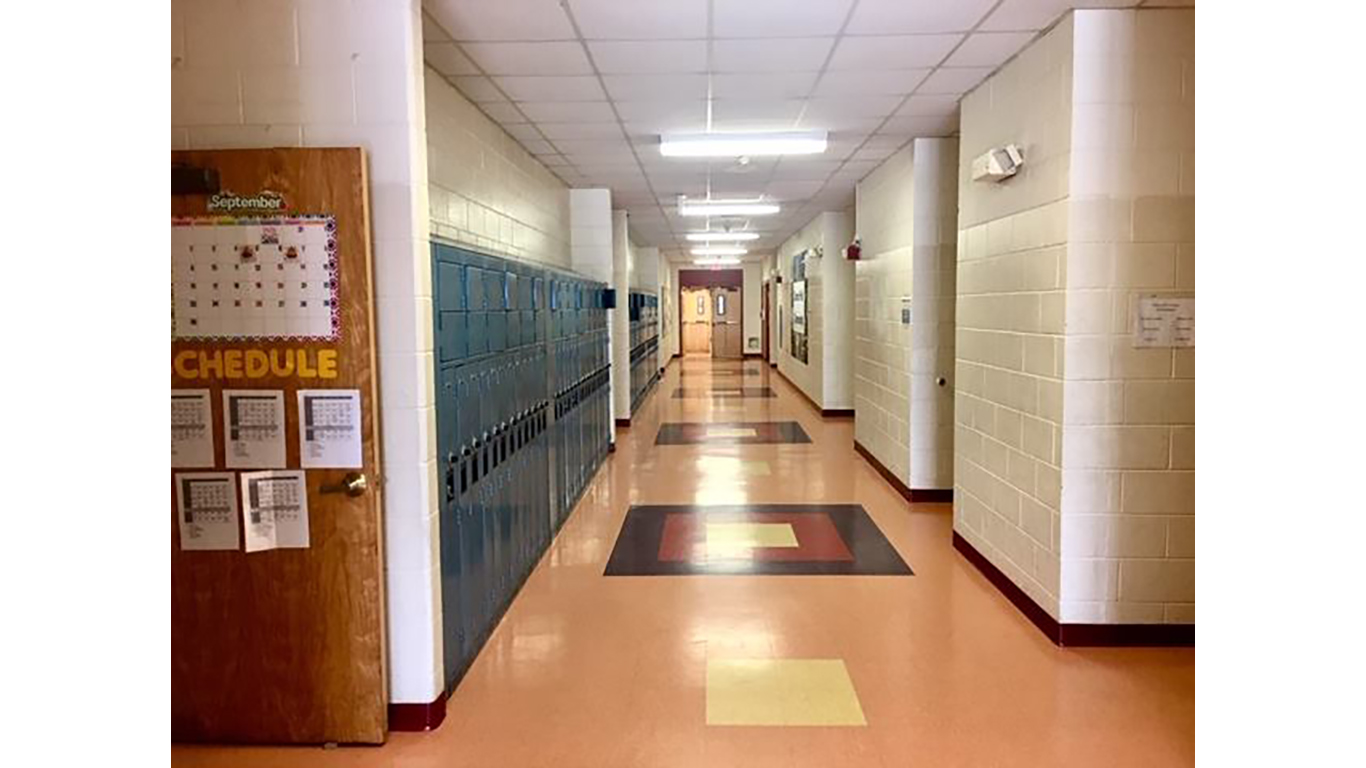
Rhode Island
> Start of 2020-2021 academic year: Late August
> Reopening plan: Up to school district
> Re-closing schools: Rhode Island delayed opening until Sept. 14 to give teachers more time to prepare for in-person learning
> Daily routine changes: Lunch in classrooms, assign bathroom times
> Mask or face covering rules: Required if social distancing is difficult
> Health screening precautions: At-home or on-site symptom screening, temperature checks
> Cumulative COVID-19 cases as of Sep 15: 2,199 per 100,000 people — 15th highest (total: 23,250)
> Change in trailing 7-day avg. daily cases, Sep 7 – Sep 14: 4.0% — 19th smallest increase (from 22,243 to 23,130)
> Population: 1.1 million
[in-text-ad-2]
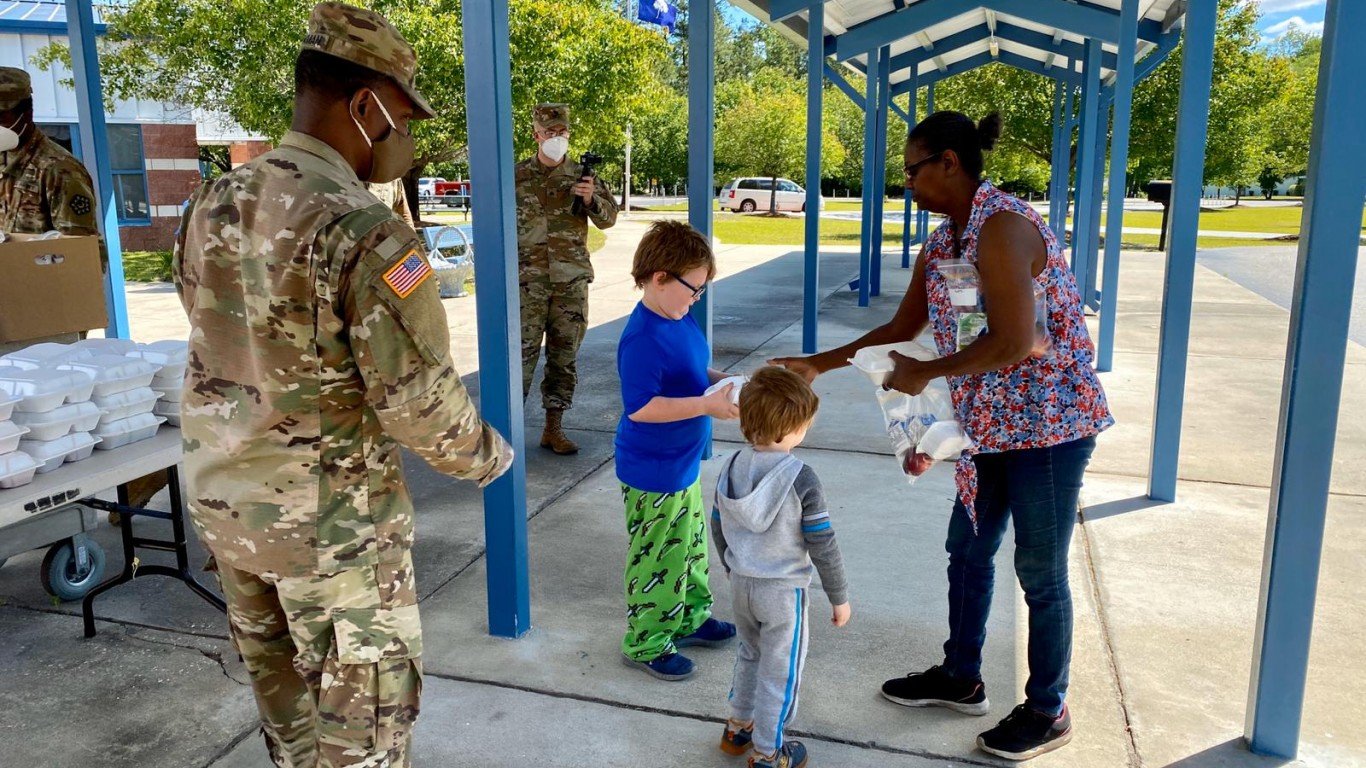
South Carolina
> Start of 2020-2021 academic year: Late August
> Reopening plan: Up to each school, only 22% start in-person full time
> Re-closing schools: At least 2 elementary schools temporarily closed in mid-August after a few staff members tested positive
> Daily routine changes: Routinely clean frequently touched surfaces
> Mask or face covering rules: Required for students and staff who ride the state’s pupil transportation system
> Health screening precautions: Up to each school
> Cumulative COVID-19 cases as of Sep 15: 2,625 per 100,000 people — 7th highest (total: 133,470)
> Change in trailing 7-day avg. daily cases, Sep 7 – Sep 14: 5.6% — 18th largest increase (from 125,607 to 132,680)
> Population: 5.1 million
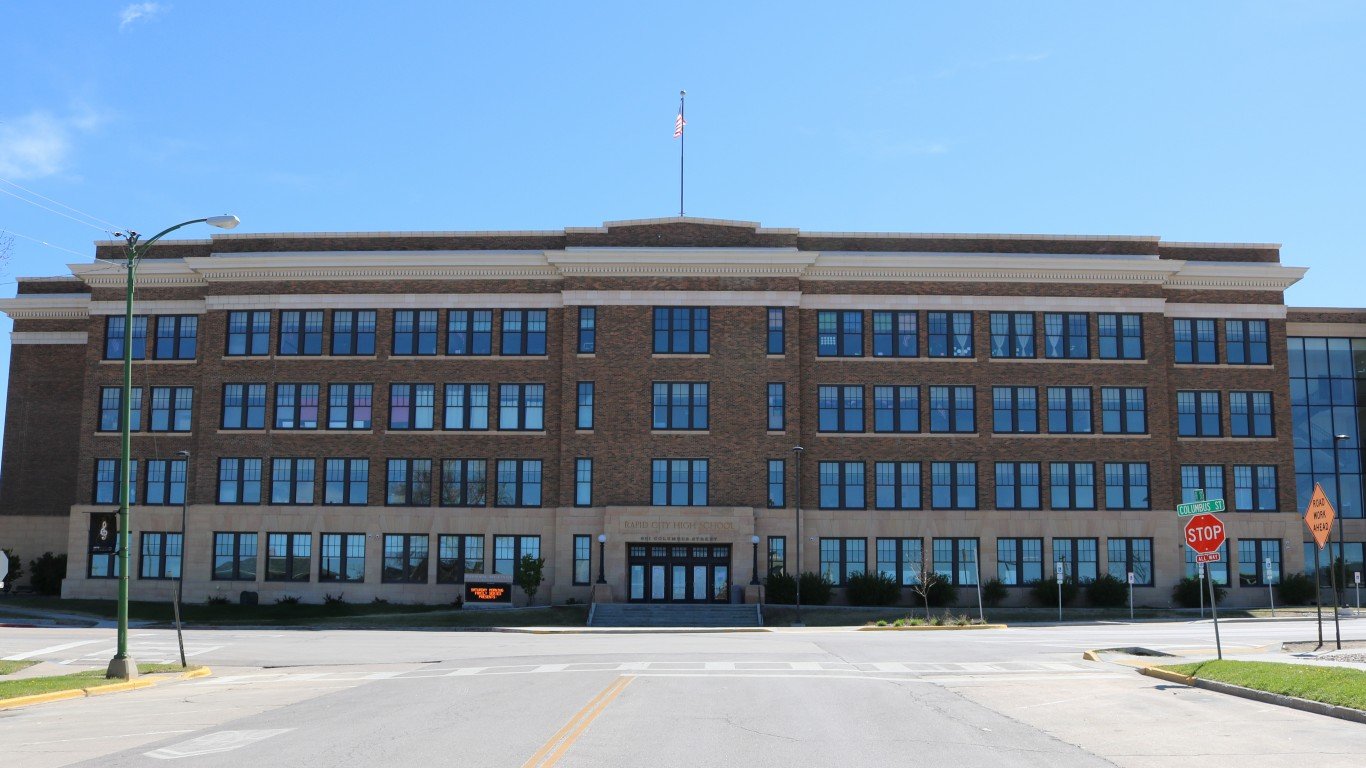
South Dakota
> Start of 2020-2021 academic year: Mid-August
> Reopening plan: Up to each district, plan for full time distance learning if students test positive
> Re-closing schools: The Lemmon School District announced on Aug. 24 that school was canceled for grades K-5 from Aug. 24 â Sept. 7 because of COVID-19
> Daily routine changes: Lunch in classrooms, schedule breaks for hand-washing
> Mask or face covering rules: Strongly recommended
> Health screening precautions: Daily symptom screening and temperature checks
> Cumulative COVID-19 cases as of Sep 15: 1,926 per 100,000 people — 22nd highest (total: 16,994)
> Change in trailing 7-day avg. daily cases, Sep 7 – Sep 14: 9.8% — 5th largest increase (from 15,300 to 16,801)
> Population: 882,000
[in-text-ad]

Tennessee
> Start of 2020-2021 academic year: Early-to-mid August
> Reopening plan: Up to each district
> Re-closing schools: Several Tennessee schools closed to in-person learning in August after students and staff members tested positive for COVID-19. Harpeth High School closed for 2 weeks on Sept. 14 to mitigate the spread of COVID-19.
> Daily routine changes: Frequent hand-washing, lunch in classrooms
> Mask or face covering rules: Required for all staff, students in middle and high school
> Health screening precautions: Daily symptom screening and temperature checks
> Cumulative COVID-19 cases as of Sep 15: 2,574 per 100,000 people — 8th highest (total: 174,274)
> Change in trailing 7-day avg. daily cases, Sep 7 – Sep 14: 5.6% — 19th largest increase (from 165,109 to 174,274)
> Population: 6.8 million
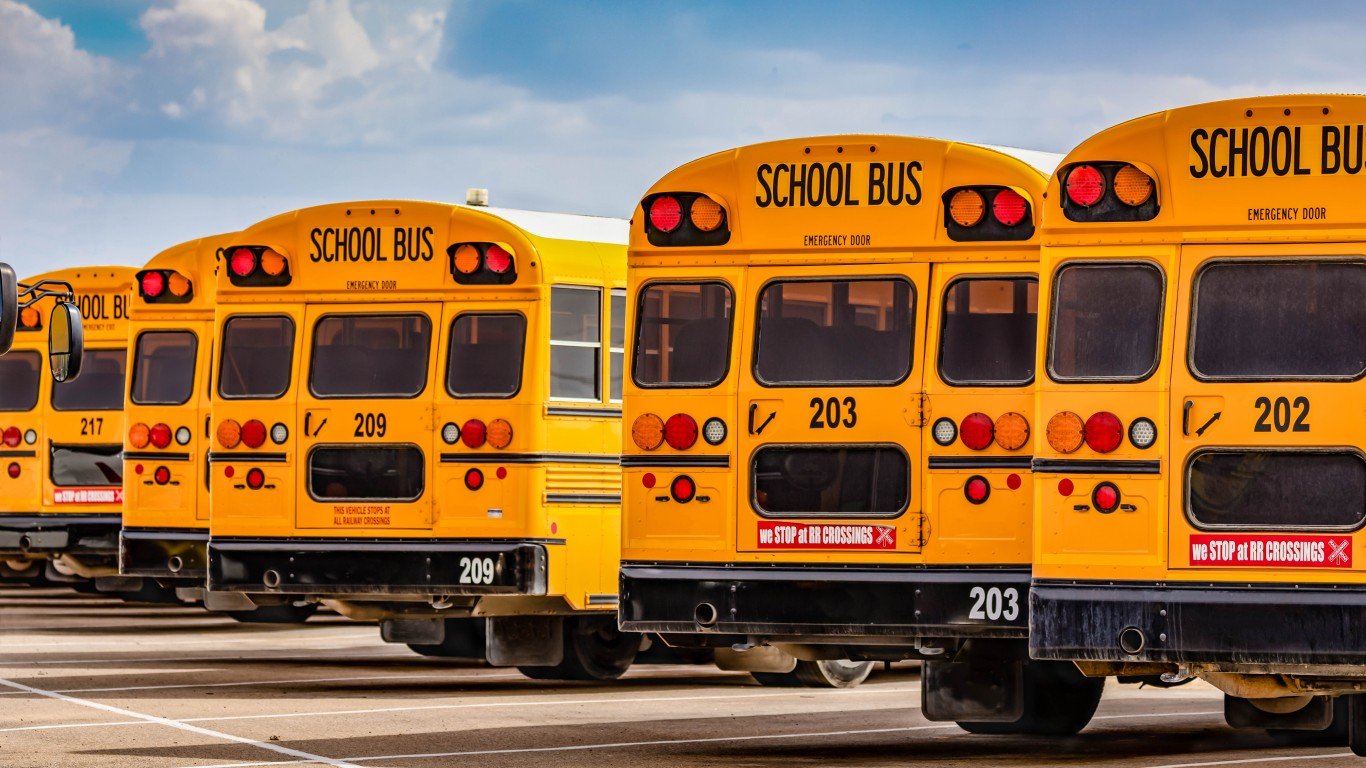
Texas
> Start of 2020-2021 academic year: Mid-August
> Reopening plan: In-person instruction in public schools, offer online option as transition period
> Re-closing schools: The Navarro school district suspended its football program for 10 days on Aug. 14 after an outbreak of COVID-19. Krum Middle School and Krum High School switched to remote learning Sept. 14 until further notice after several positive coronavirus tests.
> Daily routine changes: Shorter schools days if there is a need for fewer people in buildings
> Mask or face covering rules: Required for adults and old enough students
> Health screening precautions: Symptom self-screening for staff
> Cumulative COVID-19 cases as of Sep 15: 2,312 per 100,000 people — 12th highest (total: 663,445)
> Change in trailing 7-day avg. daily cases, Sep 6 – Sep 13: 3.3% — 13th smallest increase (from 638,310 to 659,434)
> Population: 28.7 million
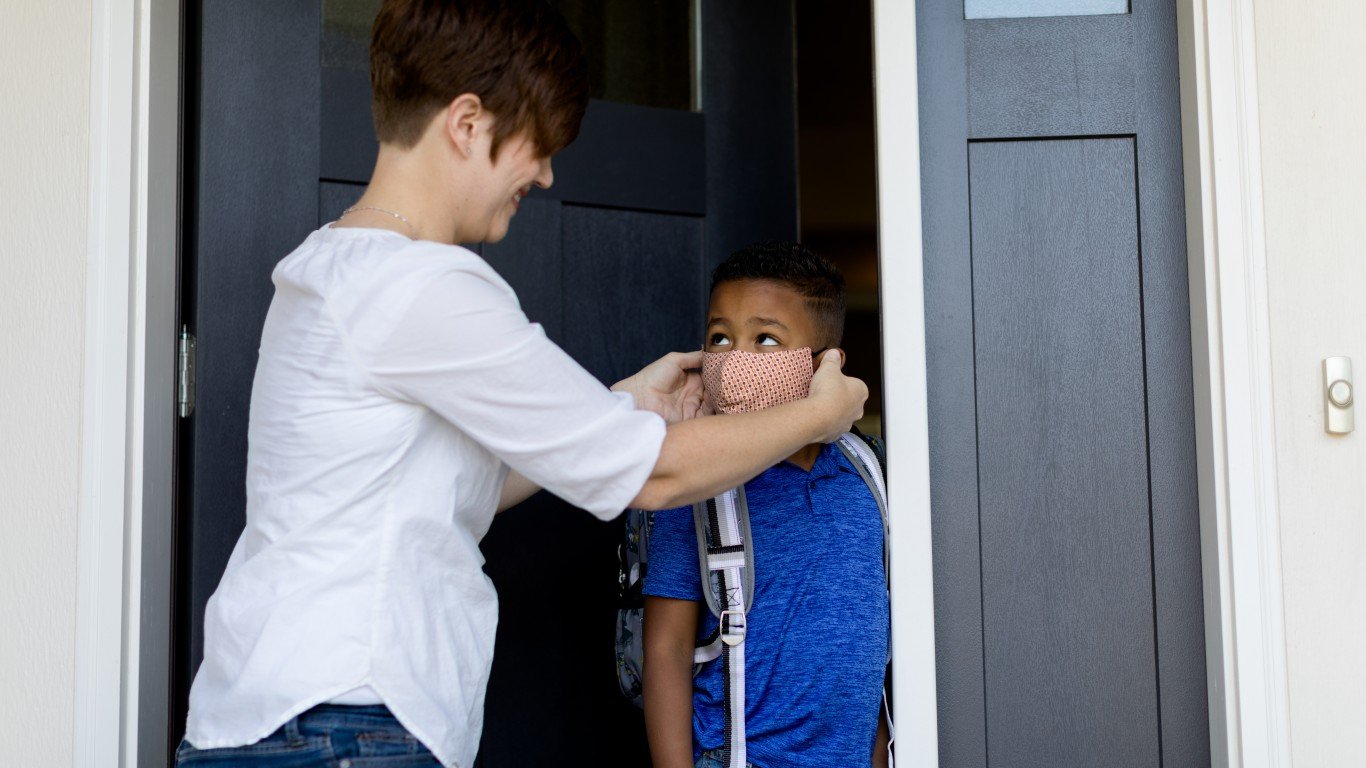
Utah
> Start of 2020-2021 academic year: Mid-August
> Reopening plan: Up to each district
> Re-closing schools: 2 charter schools in Utah closed on Sept. 1 after students and faculty tested positive
> Daily routine changes: Frequent hand-washing, physical distancing, reduce large gatherings, stagger lunch and recess times
> Mask or face covering rules: Recommended
> Health screening precautions: Self-monitoring symptoms
> Cumulative COVID-19 cases as of Sep 15: 1,866 per 100,000 people — 24th highest (total: 59,000)
> Change in trailing 7-day avg. daily cases, Sep 7 – Sep 14: 6.2% — 16th largest increase (from 55,033 to 58,438)
> Population: 3.2 million
[in-text-ad-2]
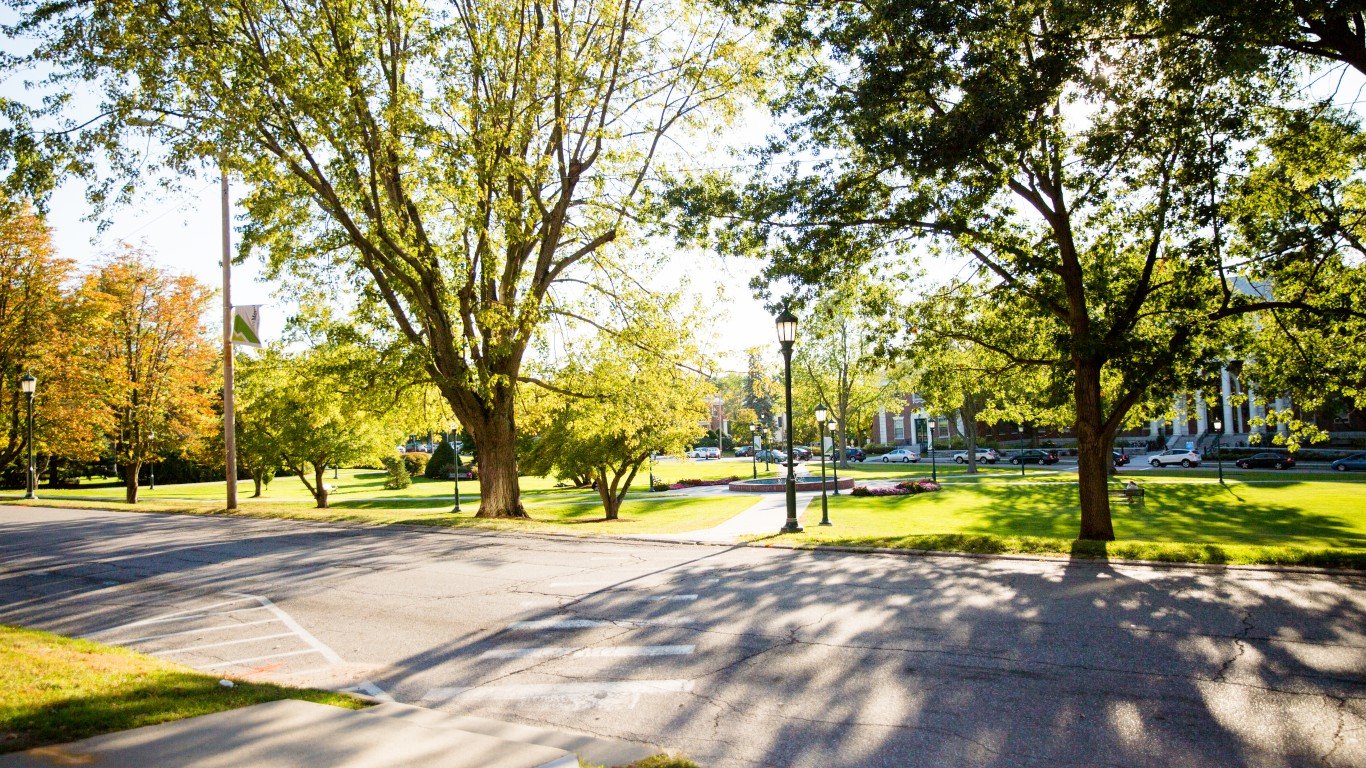
Vermont
> Start of 2020-2021 academic year: Early September
> Reopening plan: Staggered student schedules
> Re-closing schools: Crossett Brook Middle School in Duxbury closed to in-person instruction the week of Sept. 13 after two students tested positive
> Daily routine changes: Assigned section of the school yard, schedule restroom breaks
> Mask or face covering rules: Recommended for all staff
> Health screening precautions: Daily symptom screening at home
> Cumulative COVID-19 cases as of Sep 15: 272 per 100,000 people — the lowest (total: 1,702)
> Change in trailing 7-day avg. daily cases, Sep 7 – Sep 14: 2.7% — 8th smallest increase (from 1,651 to 1,696)
> Population: 626,000
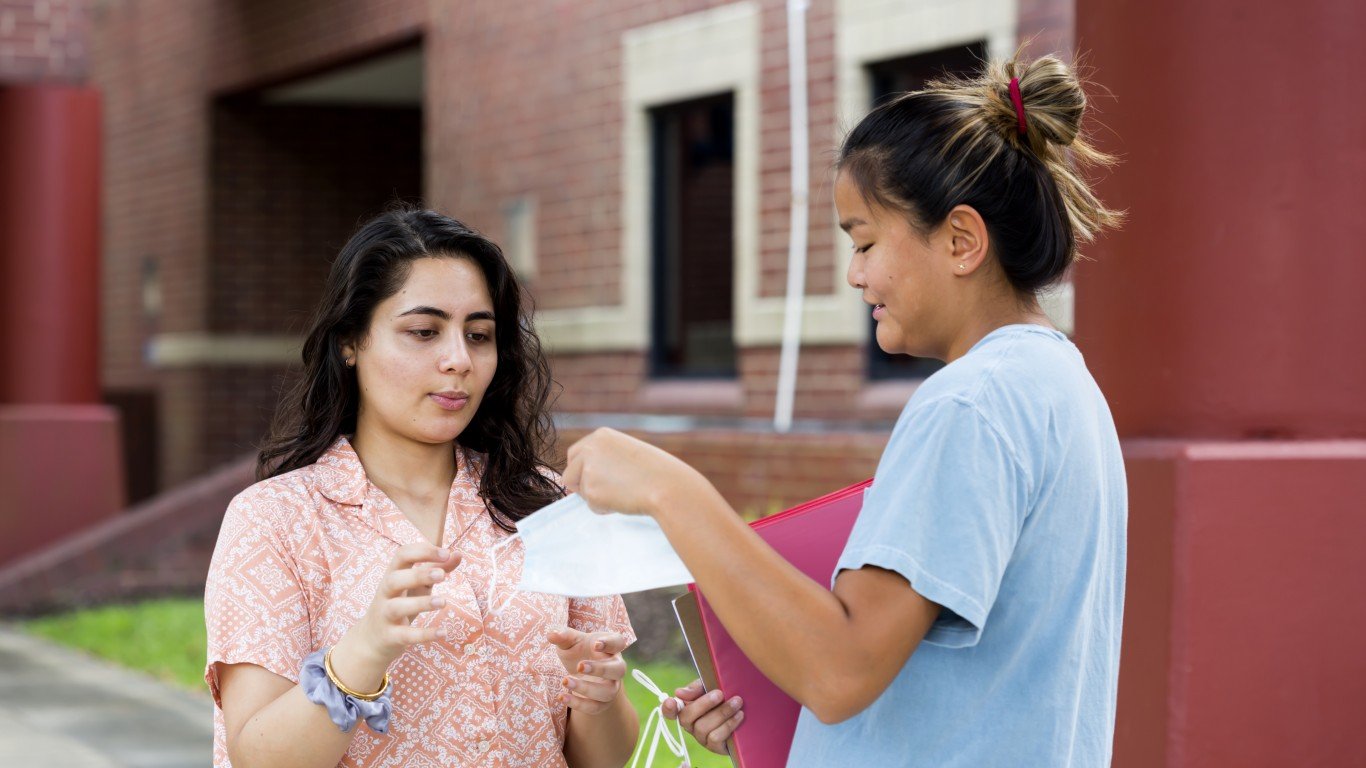
Virginia
> Start of 2020-2021 academic year: Late August / Early September (depends on district)
> Reopening plan: Reopen in phases
> Re-closing schools: At least 4 schools temporarily closed in early September after several staff members tested positive
> Daily routine changes: Up to each school
> Mask or face covering rules: Required if social distancing is difficult
> Health screening precautions: Daily symptom screenings
> Cumulative COVID-19 cases as of Sep 15: 1,591 per 100,000 people — 20th lowest (total: 135,514)
> Change in trailing 7-day avg. daily cases, Sep 7 – Sep 14: 5.5% — 20th largest increase (from 127,571 to 134,571)
> Population: 8.5 million
[in-text-ad]
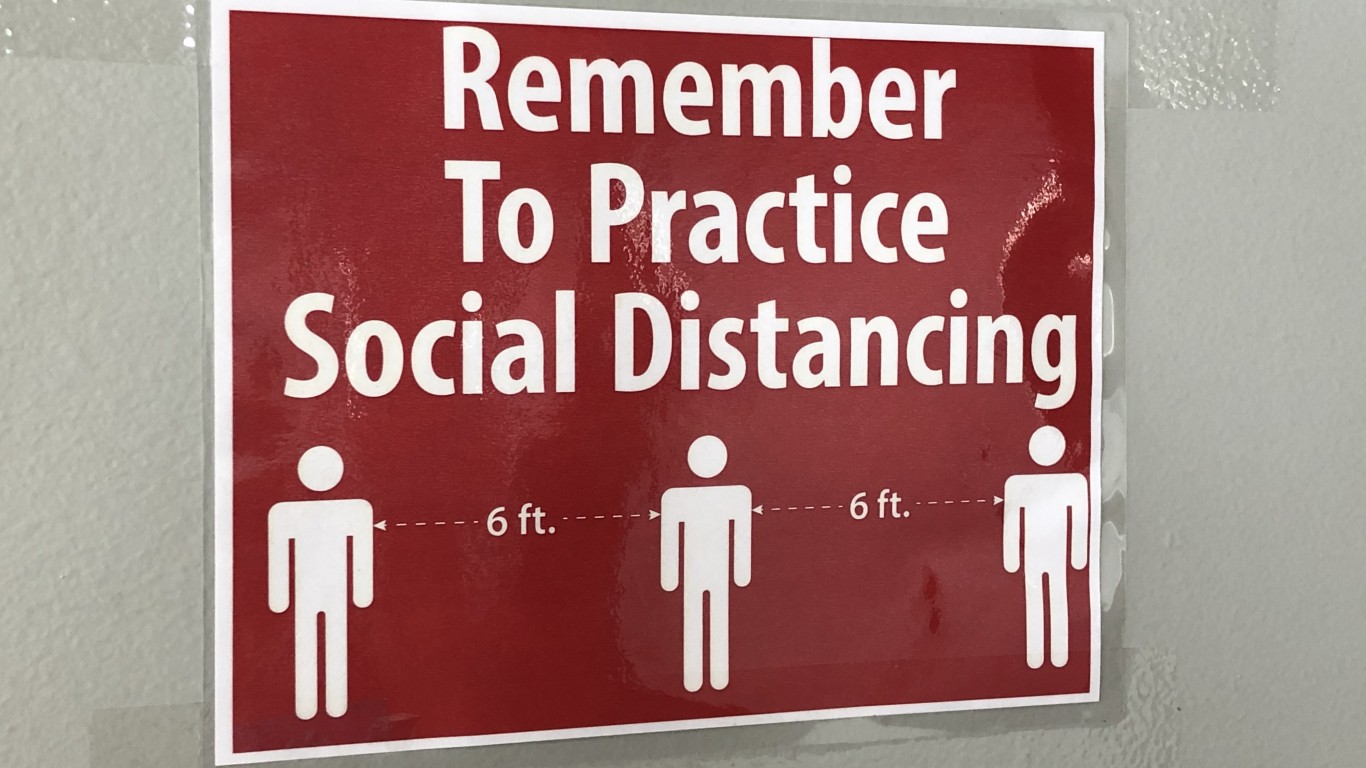
Washington
> Start of 2020-2021 academic year: Early September
> Reopening plan: Many districts starting the school year with a hybrid model
> Re-closing schools: N/A
> Daily routine changes: Frequent hand-washing, social distancing
> Mask or face covering rules: Required for staff, recommended for students
> Health screening precautions: Daily symptom screening and temperature checks
> Cumulative COVID-19 cases as of Sep 15: 1,068 per 100,000 people — 10th lowest (total: 80,465)
> Change in trailing 7-day avg. daily cases, Sep 7 – Sep 14: 3.3% — 16th smallest increase (from 77,545 to 80,138)
> Population: 7.5 million

West Virginia
> Start of 2020-2021 academic year: Early September
> Reopening plan: Expected to open for in-person instruction
> Re-closing schools: N/A
> Daily routine changes: Lunch in classroom, space meal serving lines and space seating, one-way hallways, designated exits and entries
> Mask or face covering rules: Required for staff and students grades 3 and above
> Health screening precautions: Daily symptom screening and temperature checks
> Cumulative COVID-19 cases as of Sep 15: 719 per 100,000 people — 5th lowest (total: 12,976)
> Change in trailing 7-day avg. daily cases, Sep 7 – Sep 14: 10.8% — 2nd largest increase (from 11,575 to 12,820)
> Population: 1.8 million
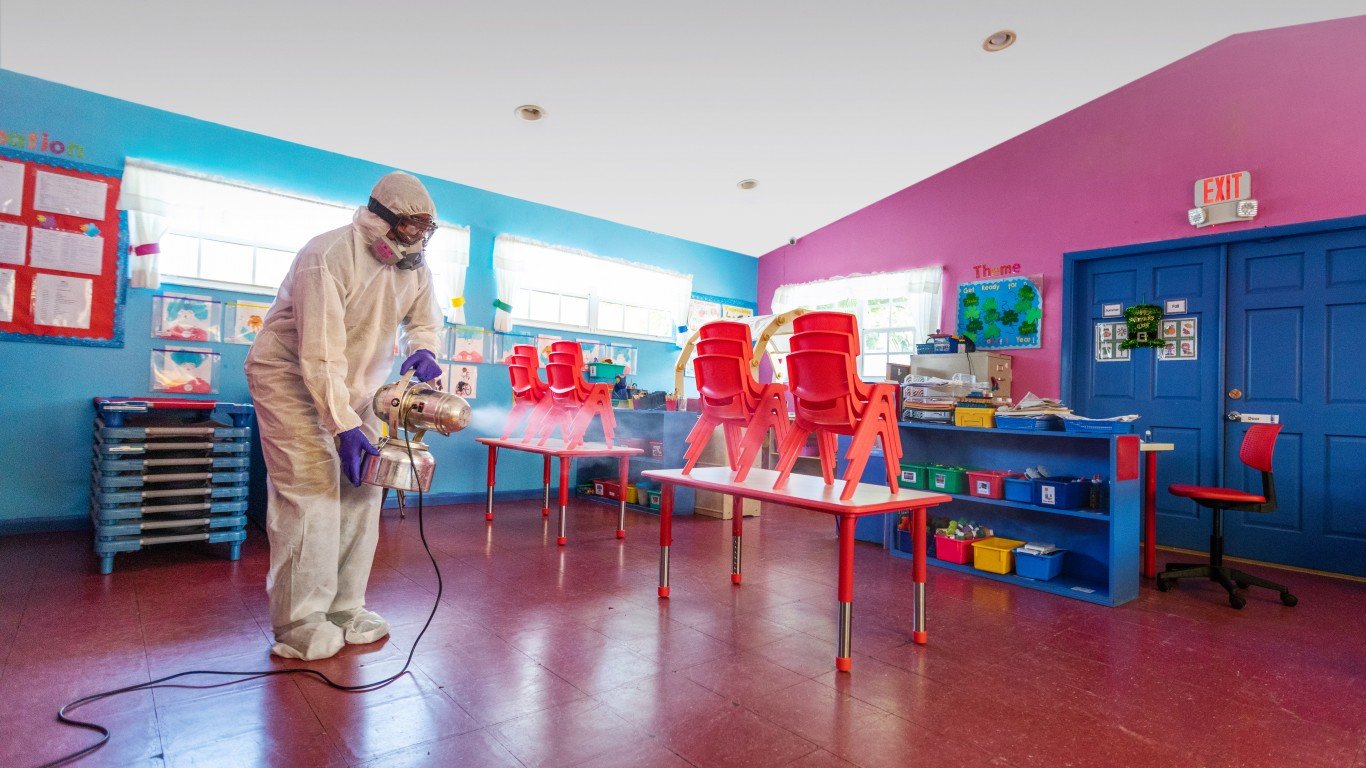
Wisconsin
> Start of 2020-2021 academic year: Early September (depends on district)
> Reopening plan: Up to each district, many will start in-person classes
> Re-closing schools: N/A
> Daily routine changes: More lunch periods, practice physical distancing when possible, frequent hand-washing
> Mask or face covering rules: Required for teacher when close to other people, required for students in high-traffic periods
> Health screening precautions: Daily symptom screening and temperature checks recommended
> Cumulative COVID-19 cases as of Sep 15: 1,547 per 100,000 people — 19th lowest (total: 89,956)
> Change in trailing 7-day avg. daily cases, Sep 7 – Sep 14: 10.0% — 4th largest increase (from 81,760 to 89,956)
> Population: 5.8 million
[in-text-ad-2]

Wyoming
> Start of 2020-2021 academic year: Late August
> Reopening plan: Reopen in phases, based on community spread
> Re-closing schools: An elementary school in Worland had its reopening delayed after 2 staff members tested positive and 10 others were placed in quarantine
> Daily routine changes: Specific groups use specific school entrances, lunch in classrooms, snacks not allowed
> Mask or face covering rules: Required if social distancing is difficult
> Health screening precautions: Up to each district
> Cumulative COVID-19 cases as of Sep 15: 768 per 100,000 people — 7th lowest (total: 4,438)
> Change in trailing 7-day avg. daily cases, Sep 7 – Sep 14: 8.9% — 8th largest increase (from 4,032 to 4,392)
> Population: 578,000
Sponsored: Find a Qualified Financial Advisor
Finding a qualified financial advisor doesn’t have to be hard. SmartAsset’s free tool matches you with up to 3 fiduciary financial advisors in your area in 5 minutes. Each advisor has been vetted by SmartAsset and is held to a fiduciary standard to act in your best interests. If you’re ready to be matched with local advisors that can help you achieve your financial goals, get started now.
Thank you for reading! Have some feedback for us?
Contact the 24/7 Wall St. editorial team.
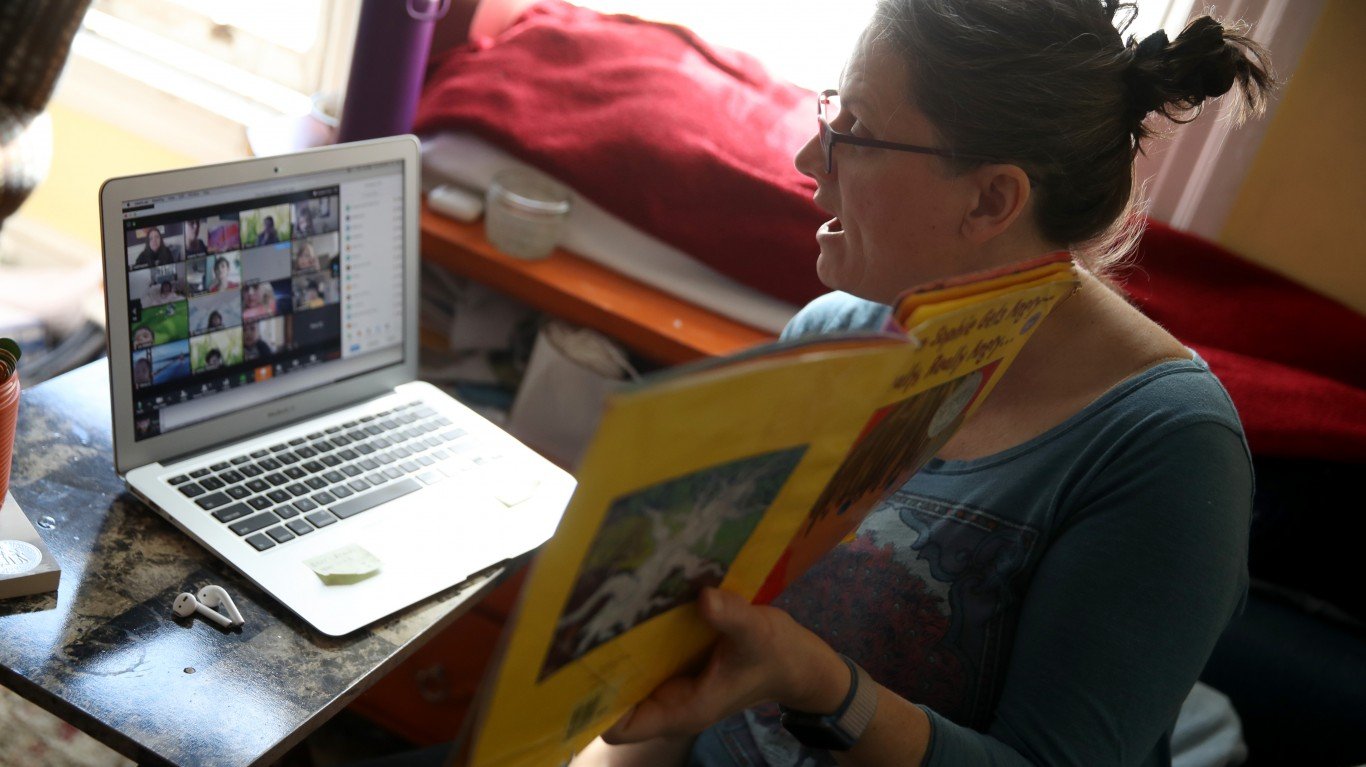 24/7 Wall St.
24/7 Wall St. 24/7 Wall St.
24/7 Wall St.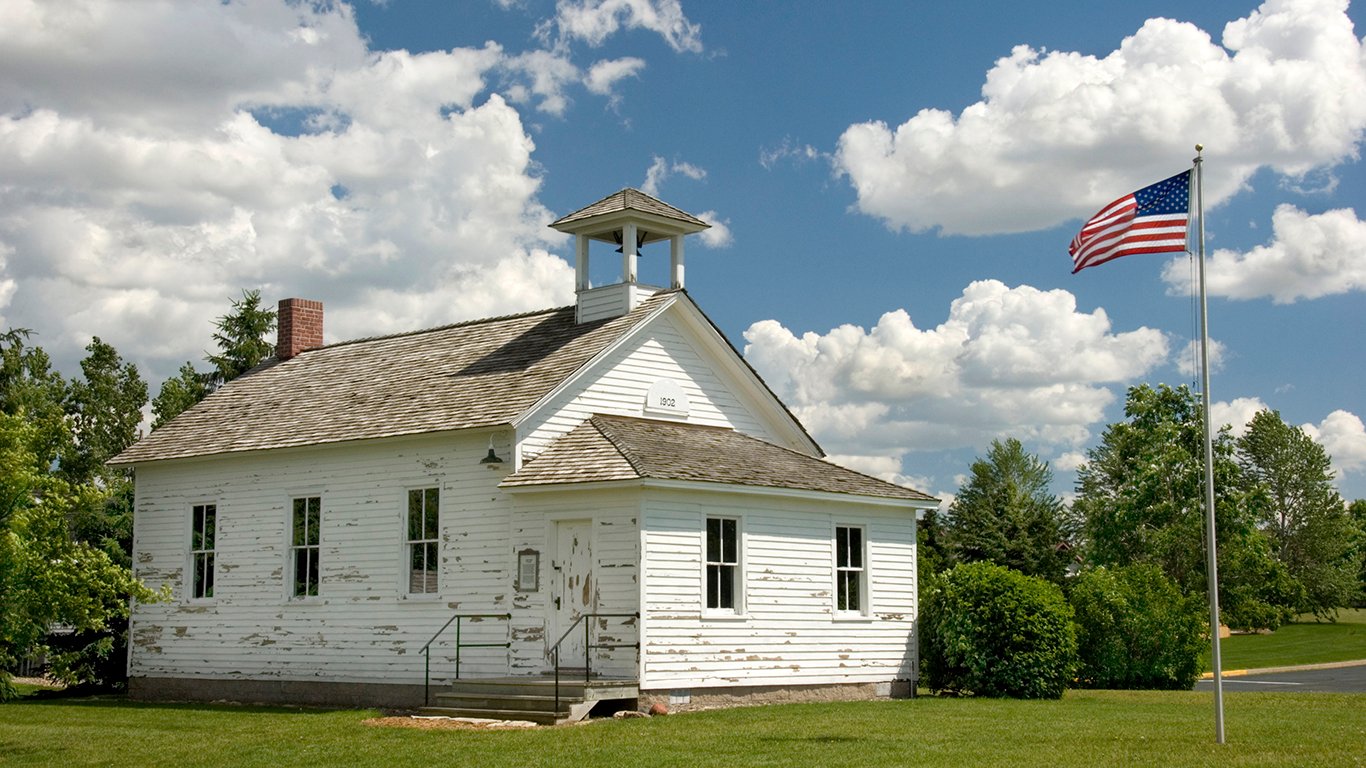 24/7 Wall St.
24/7 Wall St.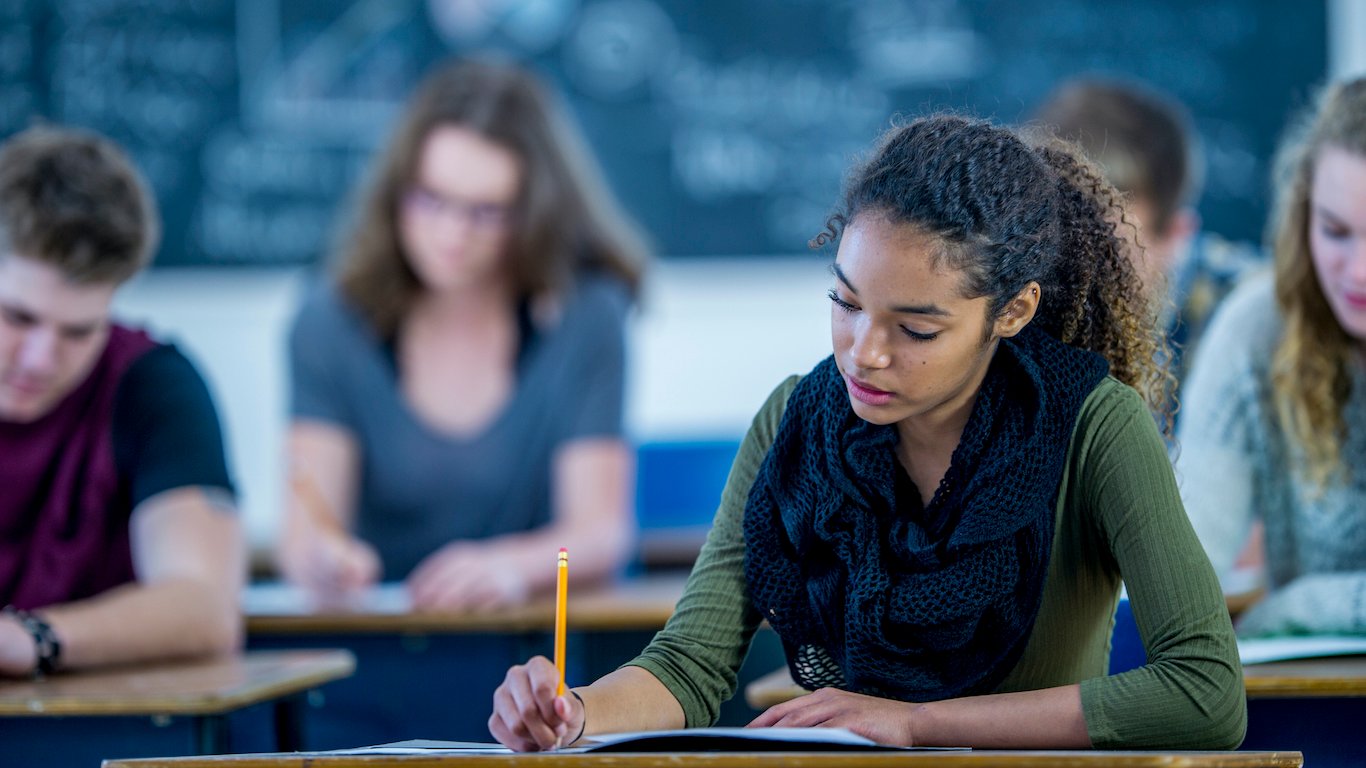 24/7 Wall St.
24/7 Wall St. 24/7 Wall St.
24/7 Wall St. 24/7 Wall St.
24/7 Wall St.

